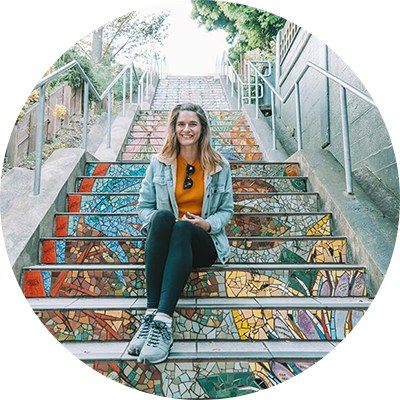The top things to do in Joshua Tree National Park and beyond so you can make the most of your desert vacation.
I’m the kind of person who likes to wing it on my vacations. Once I know where I’m sleeping, I usually just figure out the rest the day of. But you definitely can’t do that in Joshua Tree!
Not only do Joshua Tree campsites book up quickly, but Joshua Tree National Park has virtually no cell service. So, you’ll need to plan and be prepared ahead of time.
Not to worry! Not only have I been to Joshua Tree myself and have friends who live near the park and visit regularly, but I’ve also done hours of research to find the very best things to do in Joshua Tree.
From the hiking trails to the beautiful night sky, to the crazy rock formations, oddities in nearby towns, and, of course, those whimsical, weird Joshua Trees.
Think of this as your “what not to miss in Joshua Tree” one-stop shop.
Note: this post contains affiliate links, which help run this site at no extra cost to you so I can keep providing free travel advice and tips.
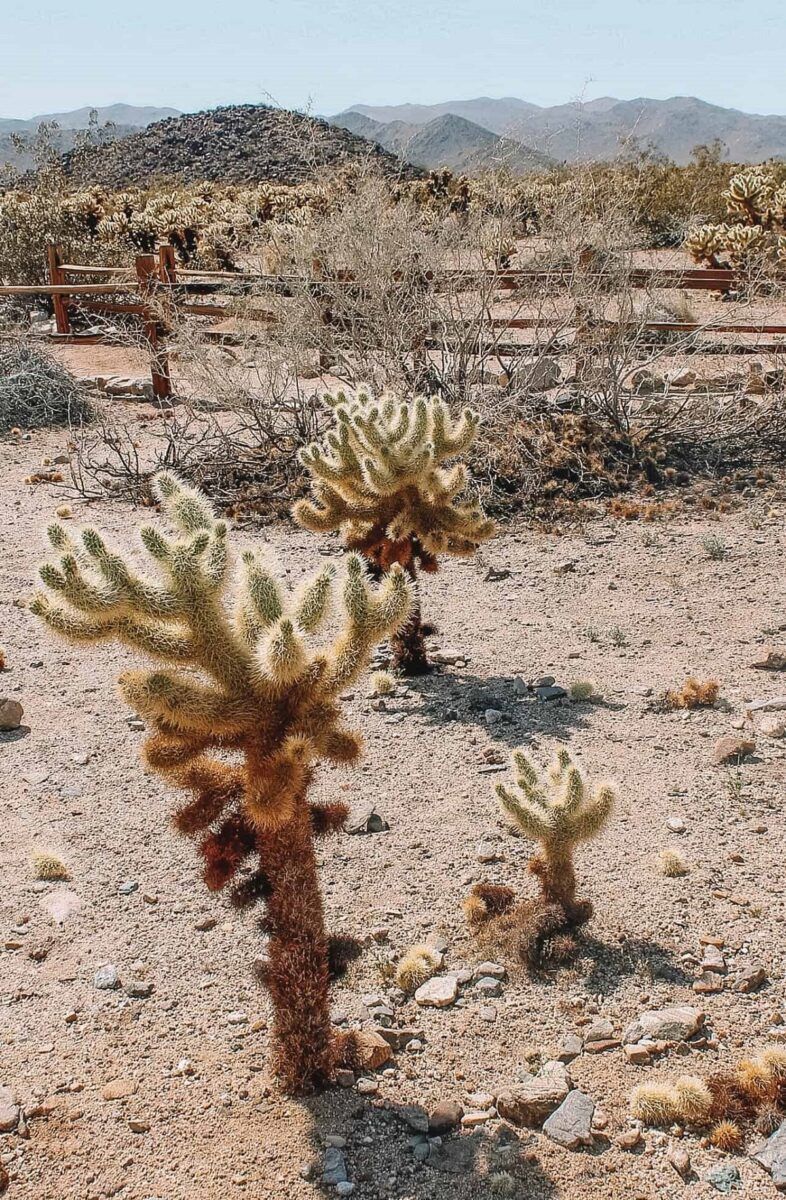
Map of Things to do in Joshua Tree
Best Things to do in Joshua Tree National Park
Joshua Tree Visitor Center
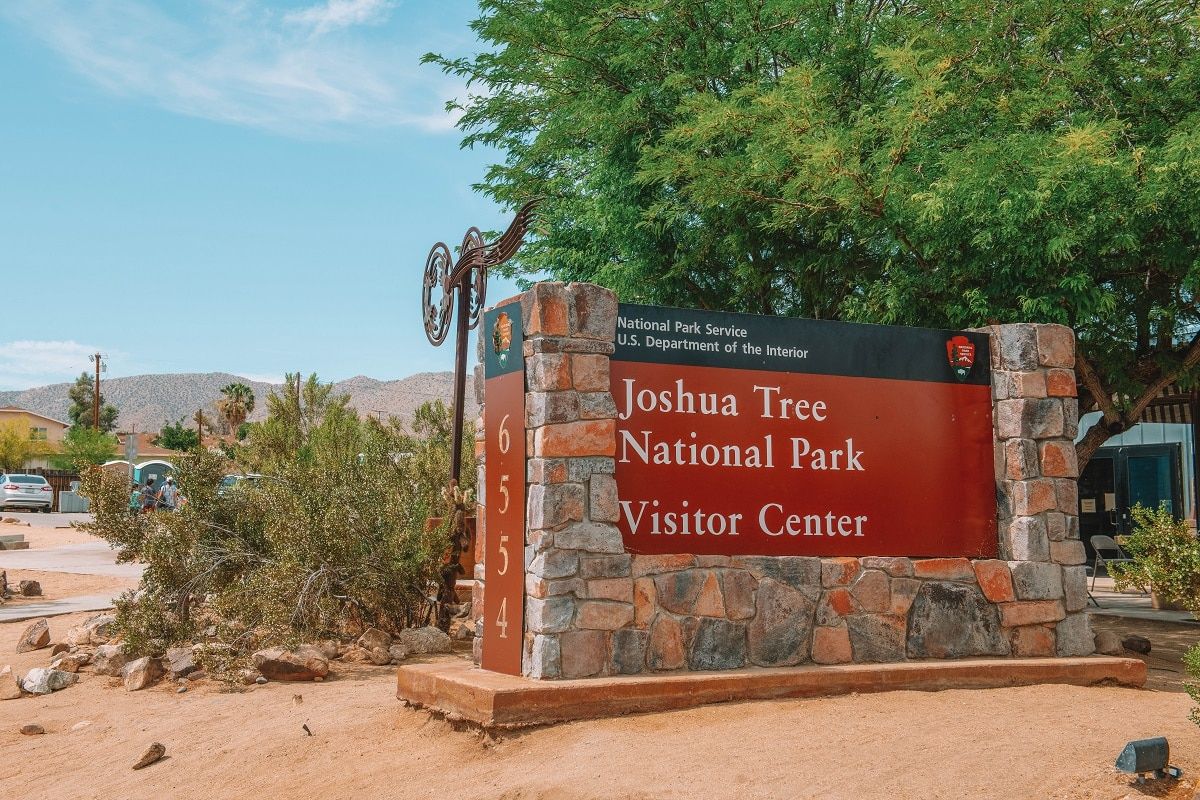
As I said, a trip to Joshua Tree requires a bit more preparation than an average vacation.
Get yourself oriented at one of the four fantastic visitor centers located in or just outside the park. You can find all the information you need on Joshua Tree Visitor Centers by clicking the link.
No matter where you’re coming from, there should be a visitor center near where you’re staying.
The Joshua Tree Cultural Center is located in Twentynine Palms, the Joshua Tree Visitor Center is in Joshua Tree (the town), and the Cottonwood Visitor Center is near the south entrance to the park along Pinto Basin Rd.
There’s also the Black Rock Nature Center in Black Rock Campground.
Note that the Oasis Visitor Center has been replaced by the Joshua Tree Cultural Center in Twentynine Palms.
Not only are these good places to get questions answered, but they have nice educational displays about Joshua Tree National Park and gift shops as well.
Join a Ranger Program
If you’re in a national park, you’d be remiss not to attend a ranger program!
Most ranger programs in the national parks are free and cover a wide range of topics. From campground evening programs to Junior Ranger nature walks, there are lots of ways to attend a ranger program.
Check here for the schedule of Joshua Tree ranger programs.
Hidden Valley Nature Trail
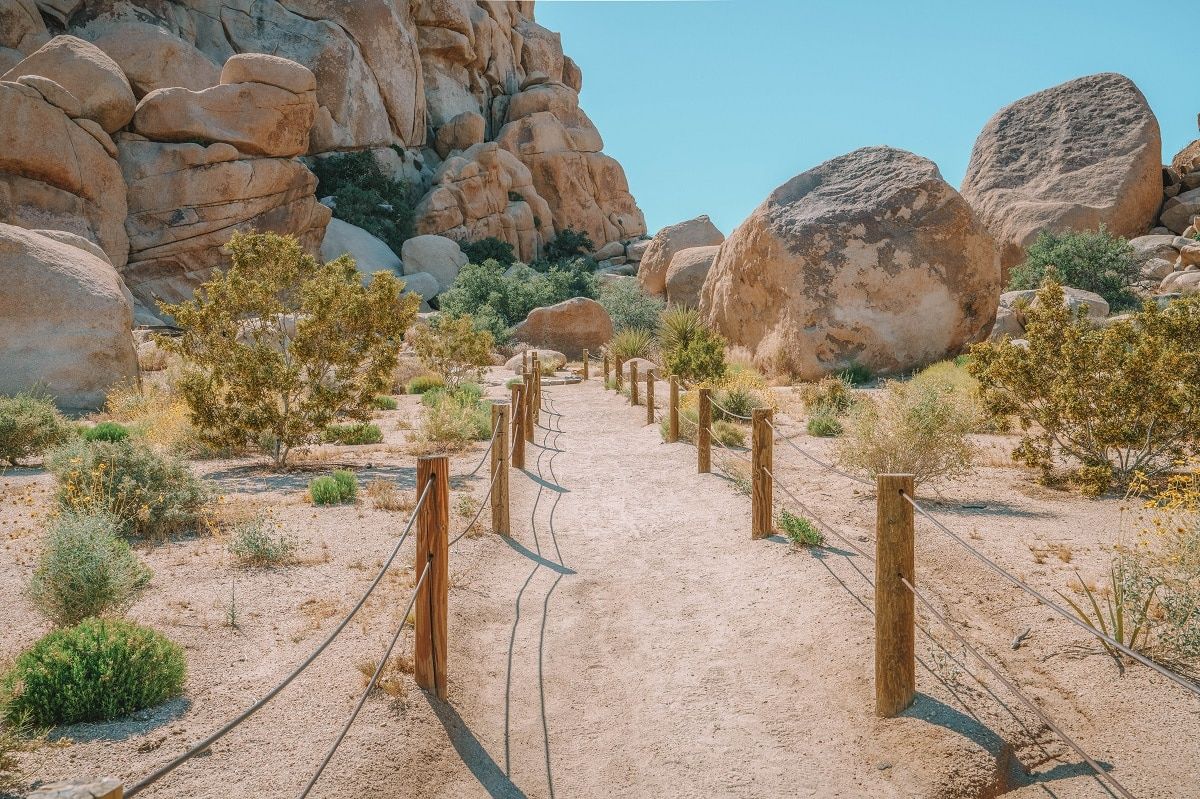
The Hidden Valley Nature Trail is an ideal trail for those without a ton of time to explore the park, making it one of the more popular hiking trails in Joshua Tree.
It includes a one-mile loop with lots of interpretive signage about the different types of plants, geology, and animals that can be found in Joshua Tree National Park.
Hidden Valley Nature Trail is located along Park Boulevard (the main east-west road through the park) across from Hidden Valley Campground.
Like so many other places in the park, the Hidden Valley Nature Trail is also a great place to see boulderers and climbers.
Barker Dam Trail
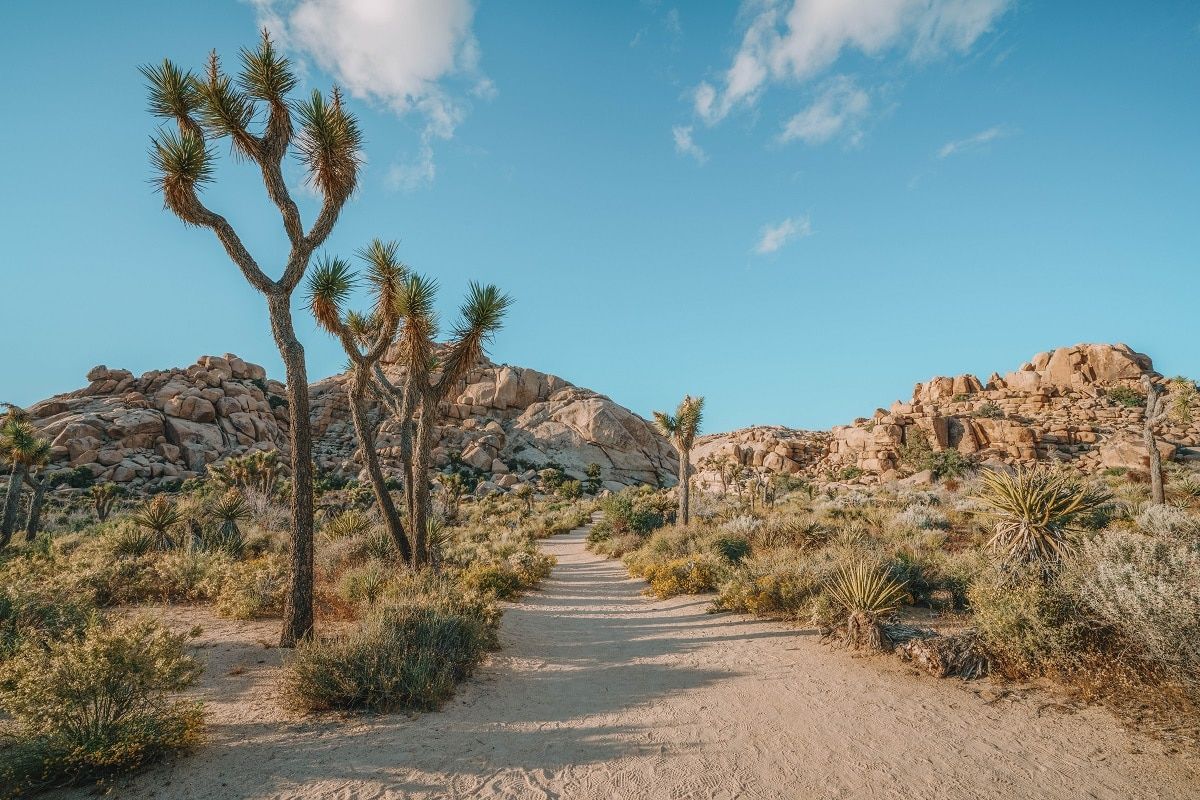
The Barker Dam Nature Trail is a great trail for easy wildlife viewing due to the presence of water in the old dam.
This is an easy 1.3-mile loop trail with very little elevation gain. You can access the trail by parking in the Barker Dam Trail parking lot.
This dam is a historic water trough that was built for cattle by C.O. Barker in 1900.
If you want a chance at glimpsing wildlife (perhaps a bighorn sheep), go early, be very quiet, and keep your distance. You don’t want to scare desert wildlife away from the water they may need to survive!
Cottonwood Spring Oasis
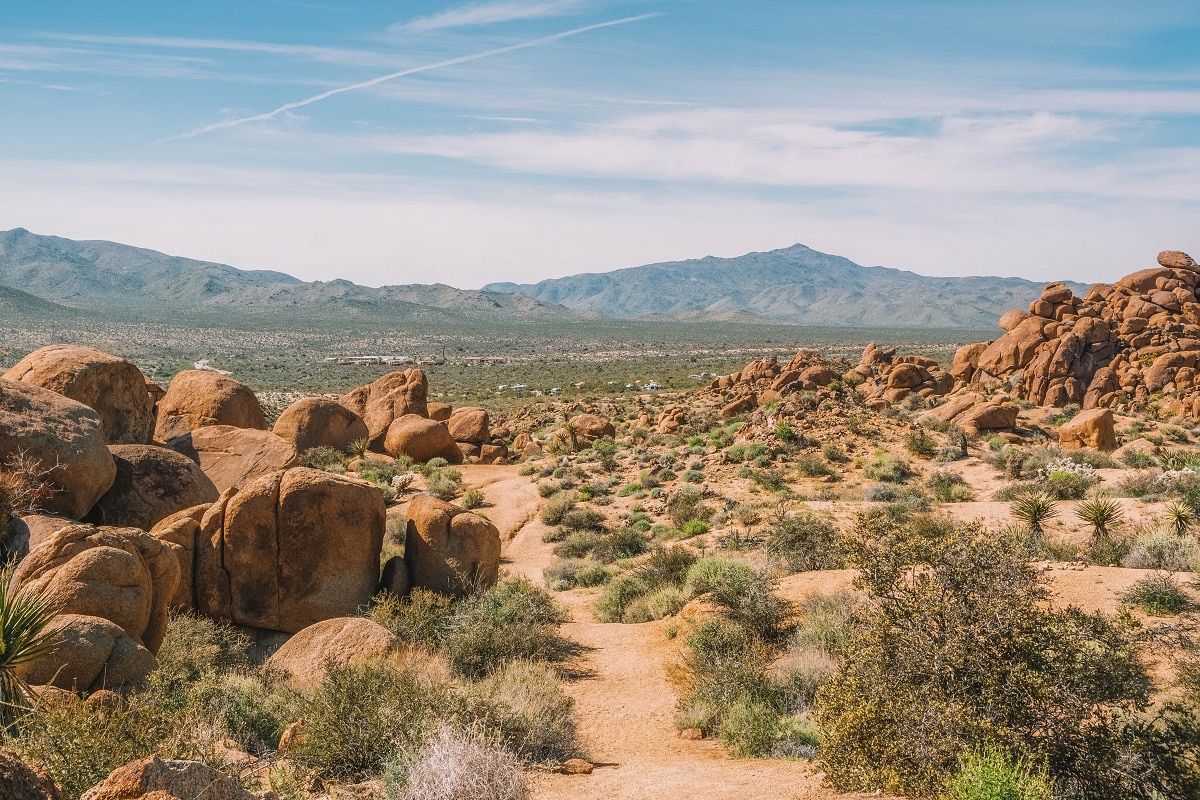
While the northern part of the park is more developed and popular, the southern area of the park is unique and scenic too!
The Cottonwood Spring Oasis is about a tenth of a mile from the Cottonwood Campground and is a great spot to see wildlife during wet times of year (winter and early spring).
Simply meander down the dry streambed and look for palms and green growth in the distance.
The Cottonwood Campground is the southernmost campground in the park and is located near the Cottonwood Visitor Center.
Wall Street Mill
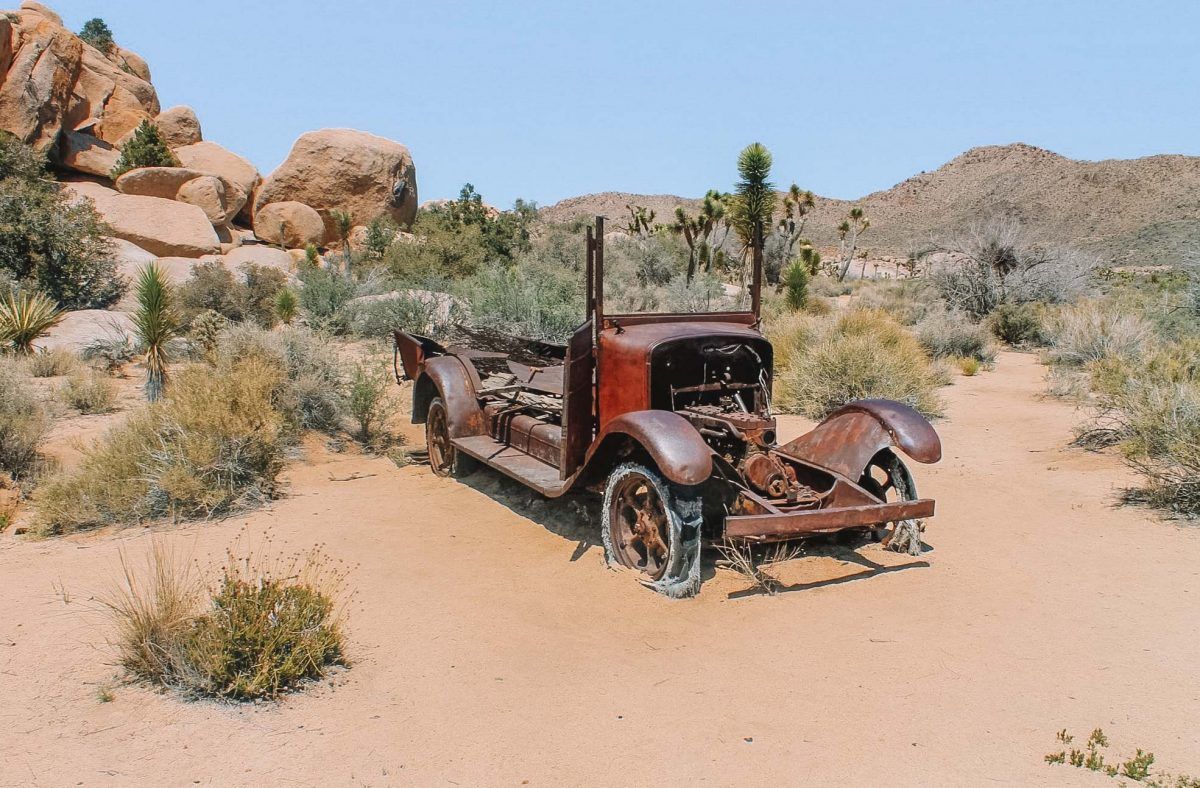
Learn about local mining history and take the easy 2.4-mile Wall Street Mill hike.
The Wall Street Mill was one of the places miners took their raw ore to be pulverized so they could remove the valuable silver and gold.
The trail takes you past an old homestead, as well as some rusty vehicles.
The Wall Street Mill is on the National Register of Historic Places. There’s even a stone marker that denotes the spot where a deadly gunfight took place between Bill Keys, the owner of the mill, and a neighbor.
You can start the trail for the Wall Street Mill from the Barker Dam Parking Area.
Ryan Mountain
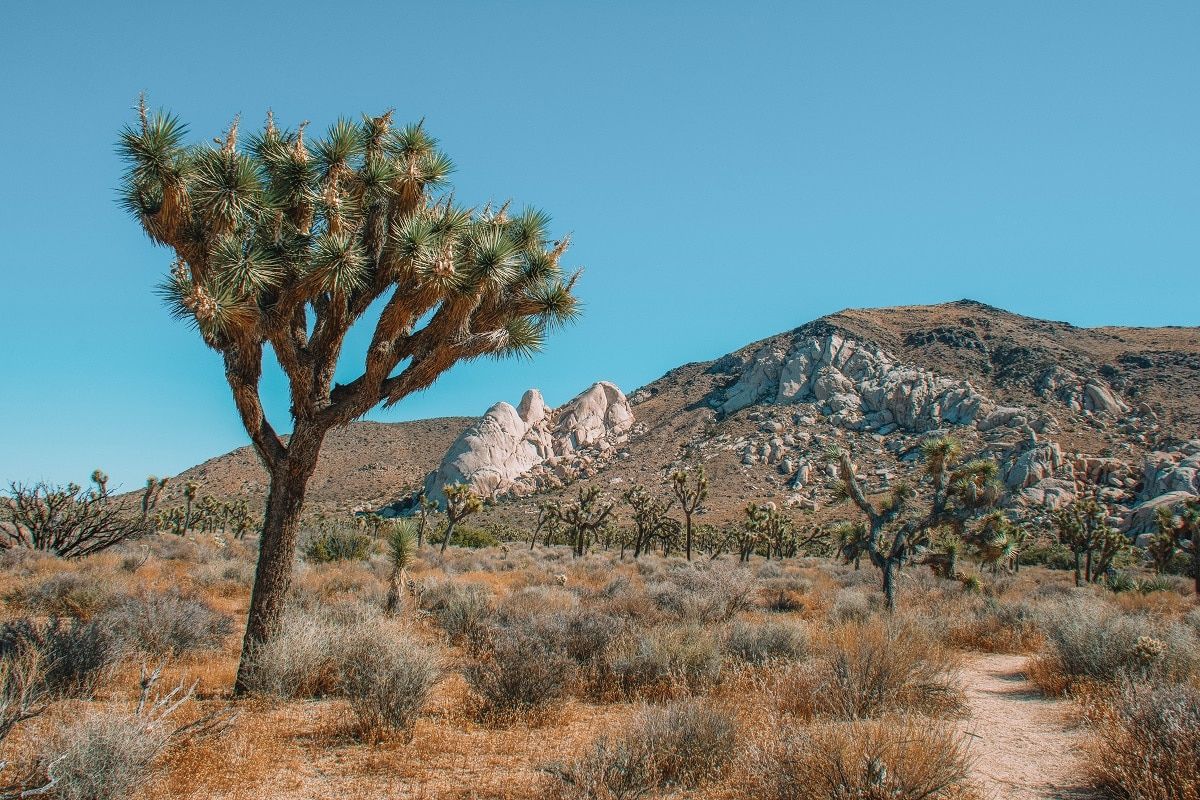
The Ryan Mountain Trail is only three miles round-trip, but don’t let the relatively short distance fool you.
This is a difficult hike with just over 1,000 feet of elevation gain and a common location for rescue operations in the park due to overheated visitors.
Like many trails in Joshua Tree, this one is very exposed with little shade. That said, the squeeze is worth the juice if you can make it to the top safely.
The top of Ryan Mountain rewards you with panoramic vistas of desert landscape, including the tallest mountains in Southern California: Mount San Jacinto and San Gorgonio.
The trailhead for Ryan Mountain is just east of Ryan Campground on Park Boulevard.
Lost Horse Mine
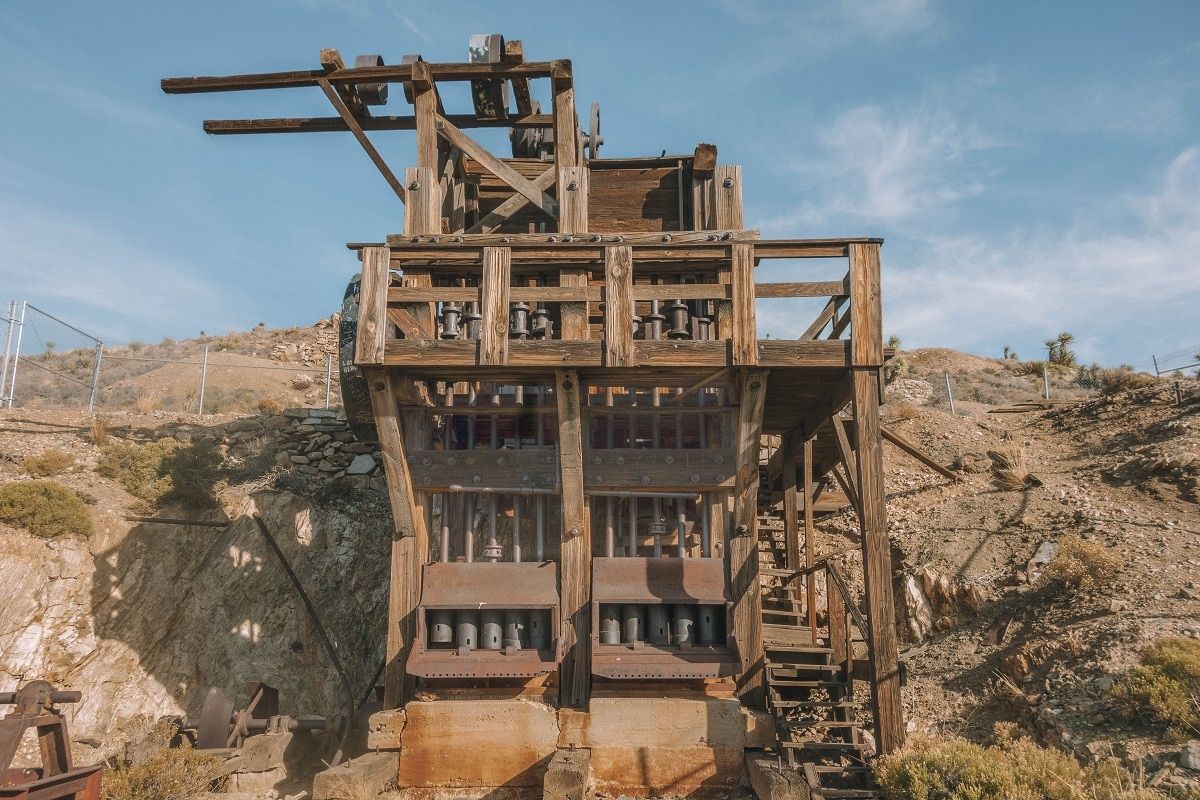
The Lost Horse Mine Loop is a moderately difficult 6.7-mile loop trail with 882 feet of elevation gain.
This trail showcases the Lost Horse Mine, which was one of the most profitable mines in the era before Joshua Tree National Park was established.
In today’s currency, the Lost Horse Mine extracted five million dollars in gold and silver.
If you choose to do the whole loop, you’ll also pass by the ironically named Optimist Mine (which was a failed mine despite its proximity to the Lost Horse Mine) and views of Pleasant Valley.
To get to the trailhead, turn onto Keys View Road from Park Boulevard, stay left at the junction with Juniper Road, and then turn left onto Lost Horse Mine Road. The trailhead is at the end of the road.
Boy Scout Trail
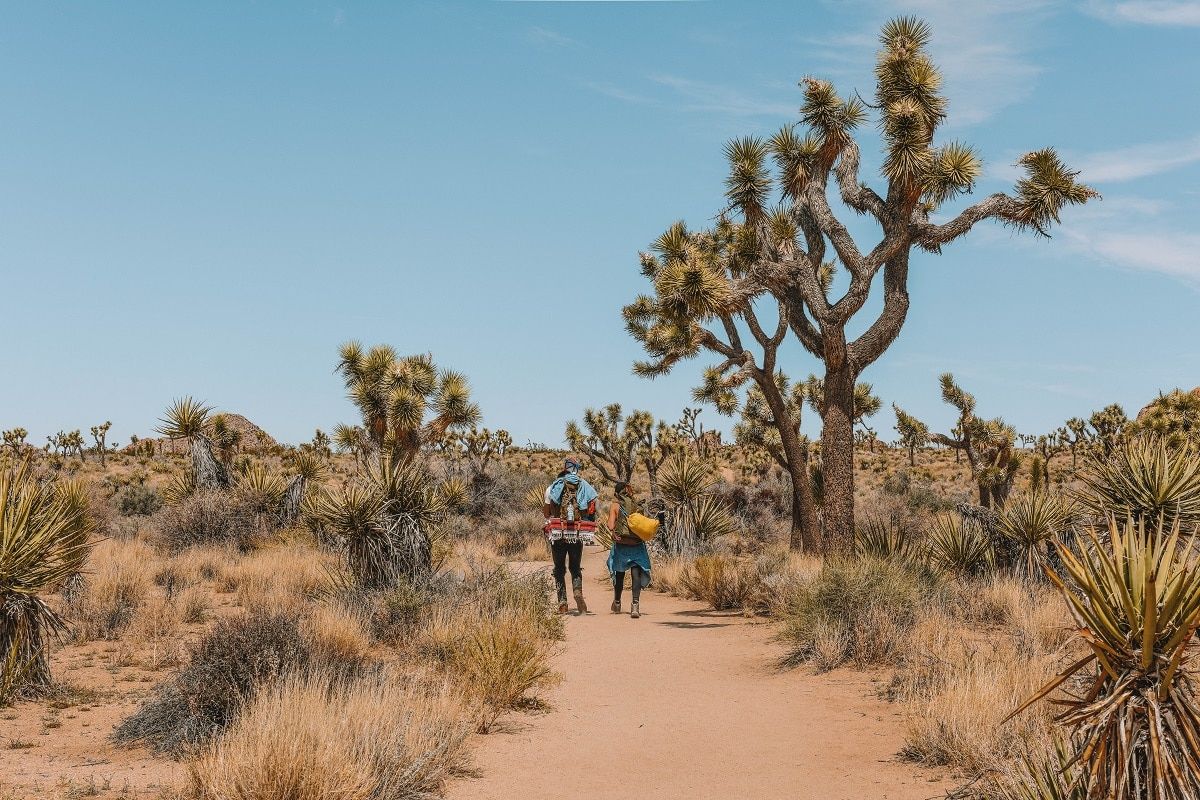
The Boy Scout Trail is a strenuous 16-mile trail that starts at the Keys West Trailhead (near the West Entrance to the park).
You’ll get to see many Joshua Trees on this hike as well as lots of crazy boulder formations in the Wonderland of Rocks.
This is an out-and-back trail, so I recommend having a second car at the end of the hike to act as your shuttle.
If you’re not interested in backpacking, this trail is still popular as a day trip. You simply turn around when you want.
This hike is in the Mojave Desert with lots of whimsical Joshua Trees and even though the parking lot is pretty big, it fills up quickly on weekends.
Local tip: Unlike most national parks, Joshua Tree doesn’t require a strict reservation to backcountry camp. There’s no fee, you simply register at the backcountry registration board.
Looking for more hiking options? Read our guide to the best hikes in Joshua Tree.
Cholla Cactus Garden
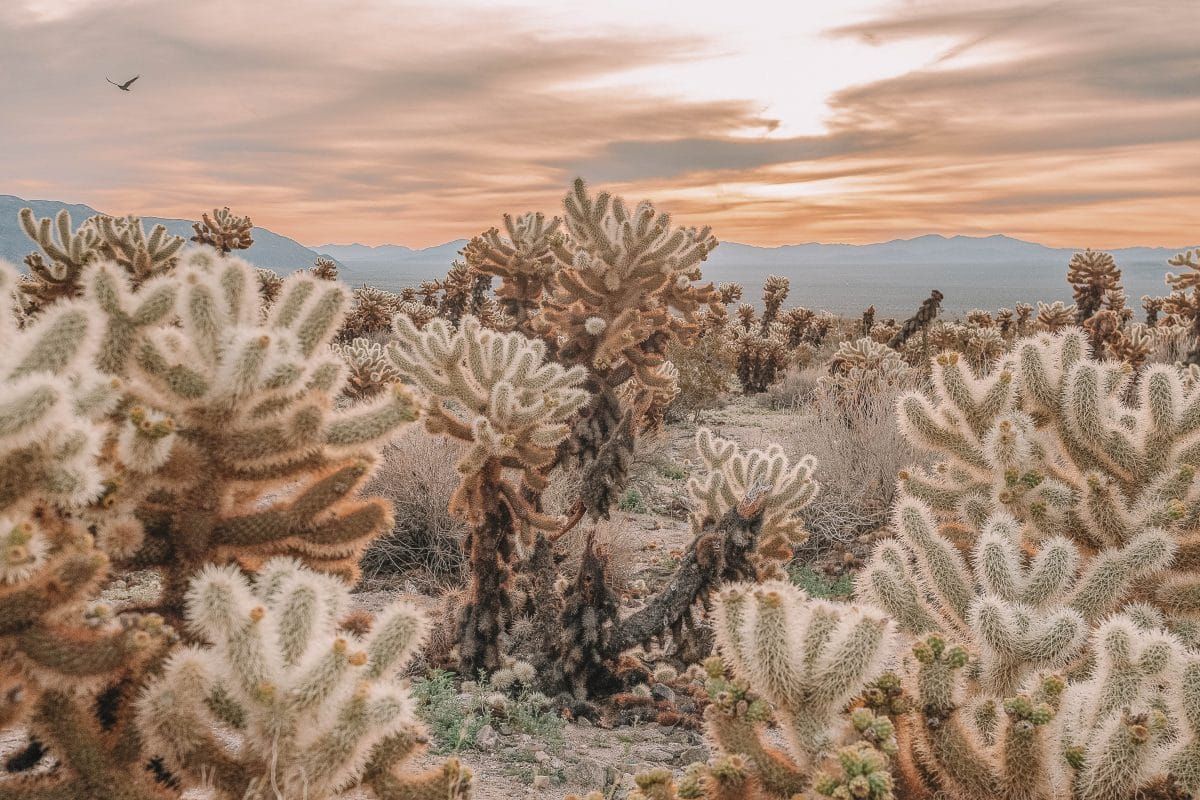
The Cholla Cactus Garden is a short quarter-mile path located just off Pinto Basin Road (the main north-south road in the park).
This wheelchair-accessible path meanders through a forest of waist-height cholla cactus.
These short, fuzzy-looking cacti are great to visit during golden hour when they catch the rising (or setting) sun and look like they’re glowing.
The Cholla Cactus Garden is located on the boundary between the Mojave and Colorado Deserts.
Local tip: Make sure to wear closed-toe shoes and don’t get too close to the cacti as you walk the path. They’re called “jumping” cholla for a reason.
Keys View
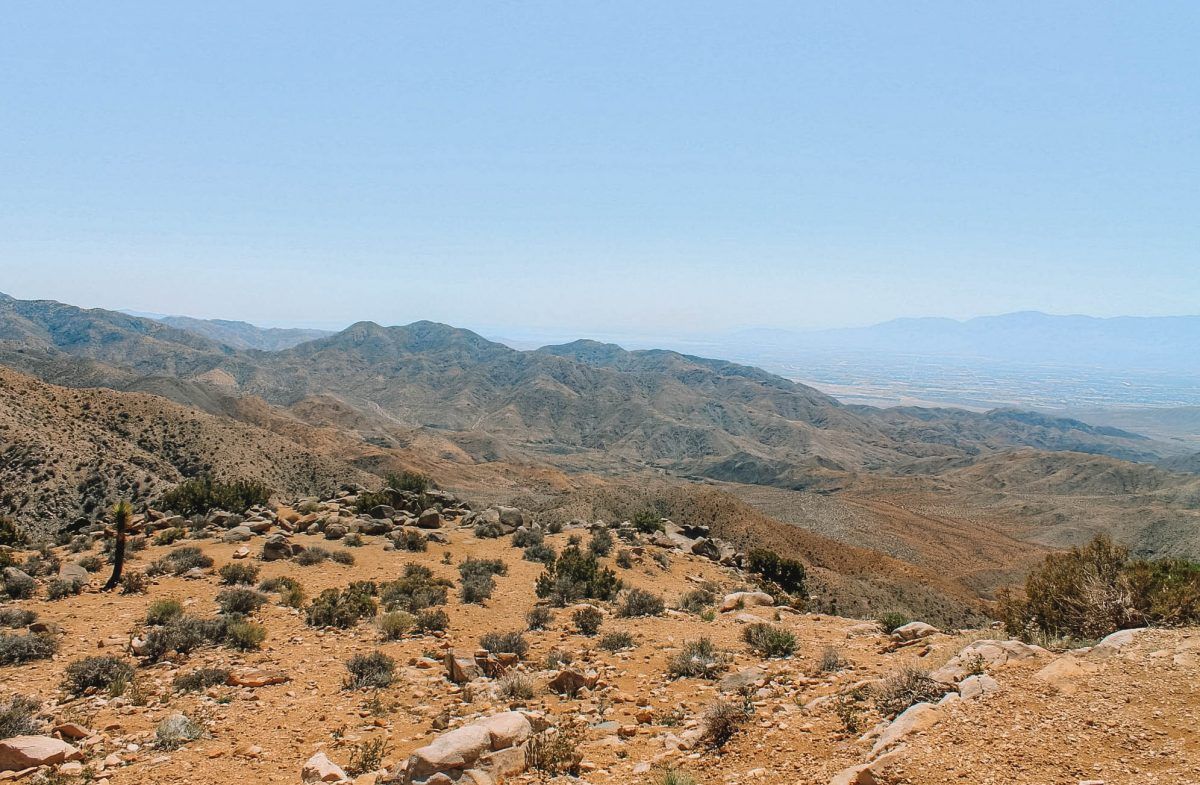
Keys View is another easy-to-get-to spot and the highest point in the Little San Bernadino Mountains, featuring one of the best viewpoints in the park.
You can access this short out-and-back trail at the end of Keys View Road, which is off Park Boulevard. The viewpoint is very close to the parking lot.
From Keys View, you’ll get a stunning vista of the surrounding desert landscape, including the Coachella Valley and Mount San Jacinto.
Keys Ranch
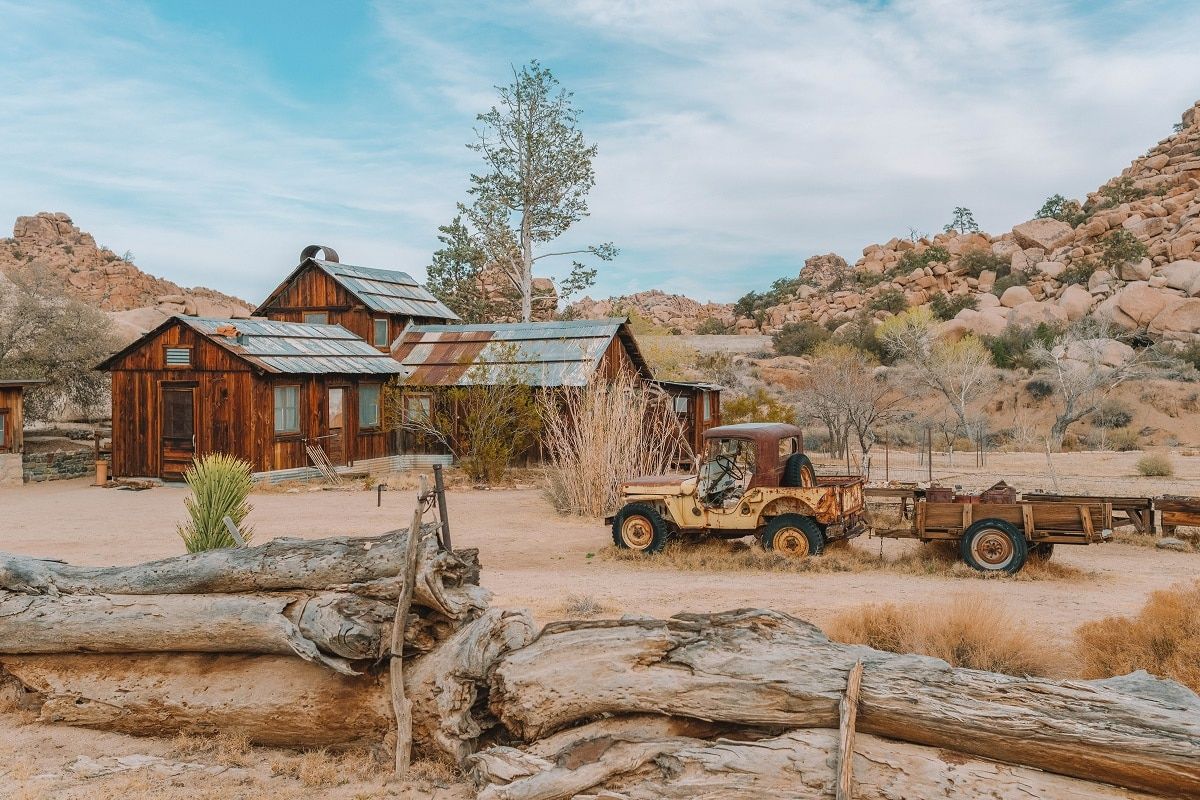
Bill and Frances Keys were two early American settlers to the Joshua Tree region and their remote farmhouse, Keys Ranch, is now listed on the National Register of Historic Places.
You can take a tour of Keys Ranch with a ranger guide in October-May. The tickets can be purchased on recreation.gov and are $10 for adults and $5 for kids. The tour lasts about 90 minutes.
Arch Rock & Heart Rock
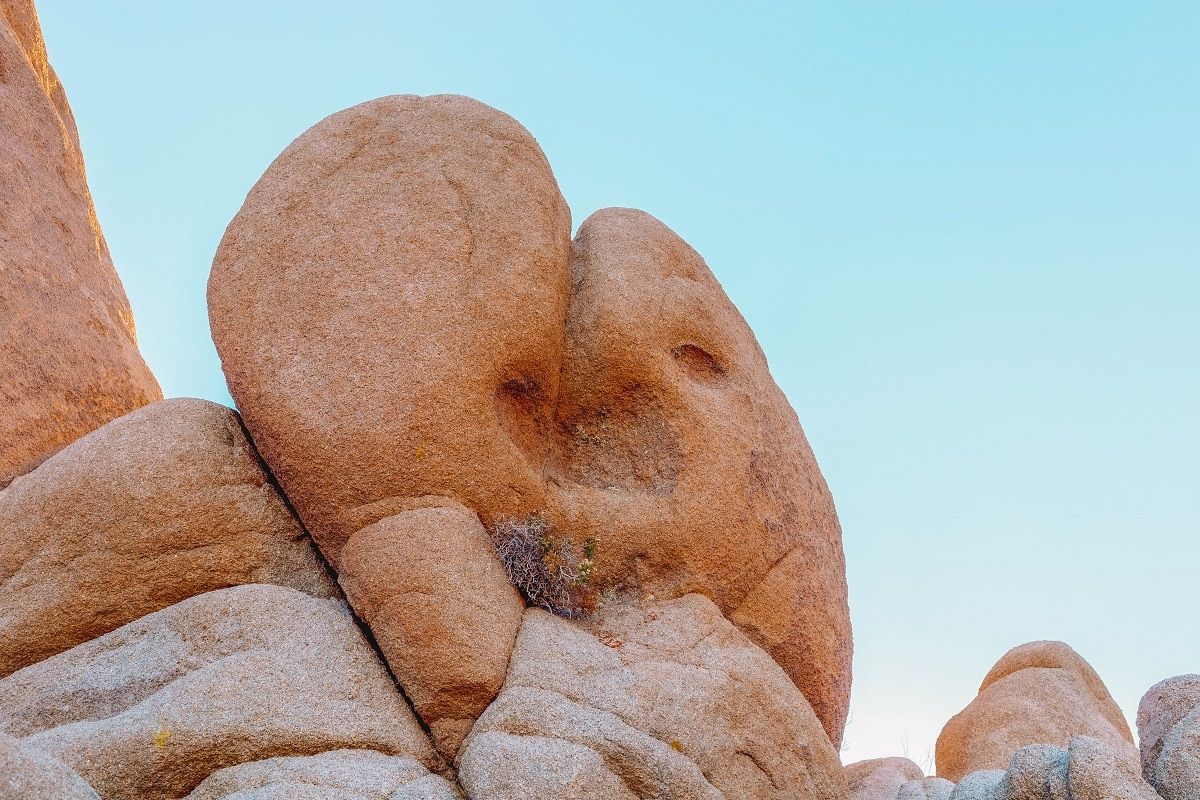
Arch Rock is a natural rock arch located on, you guessed it, the Arch Rock Trail. This is a 1.4-mile, easy hike that starts from White Tank Campground on Pinto Basin Road.
This is one of the most popular trails in the park, so I recommend getting there as early as you can to avoid the crowds.
Going early not only ensures you have a quieter hiking experience but also allows you to catch the light coming through the arch if you time it right for sunrise.
Heart Rock is a large boulder shaped like a rock!
Visiting it is one of the most romantic things to do in Joshua Tree (if you ask me) and is a very, very popular place for pictures. The rock is also located off the Arch Rock Trail.
Skull Rock
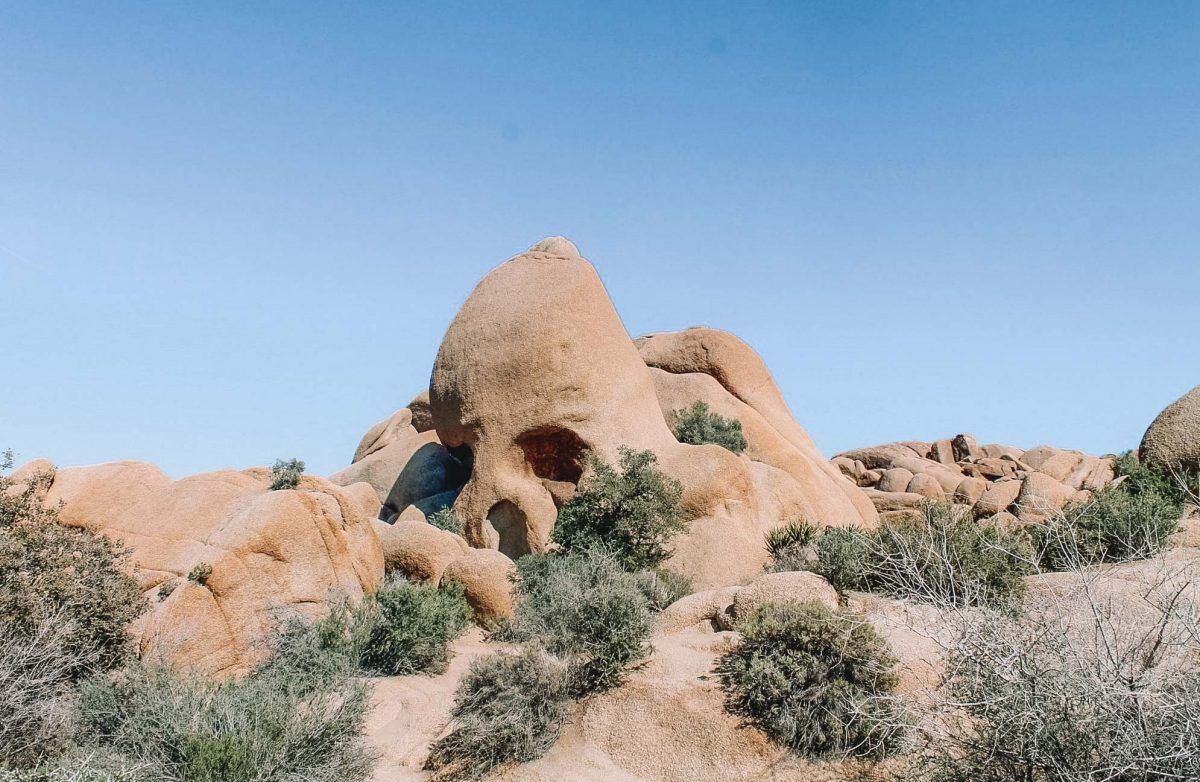
Skull Rock is another one of the very famous rock formations in the park. The giant boulder looks like the top half of a skull in the right light.
You can see Skull Rock on the Skull Rock Nature Trail, which is near Jumbo Rocks Campground. The trail is 1.7 miles and rated as easy.
If you don’t want to do the hike, Skull Rock can also be seen from the side of the road, for an easy and quick photo op.
Rock Climbing & Bouldering
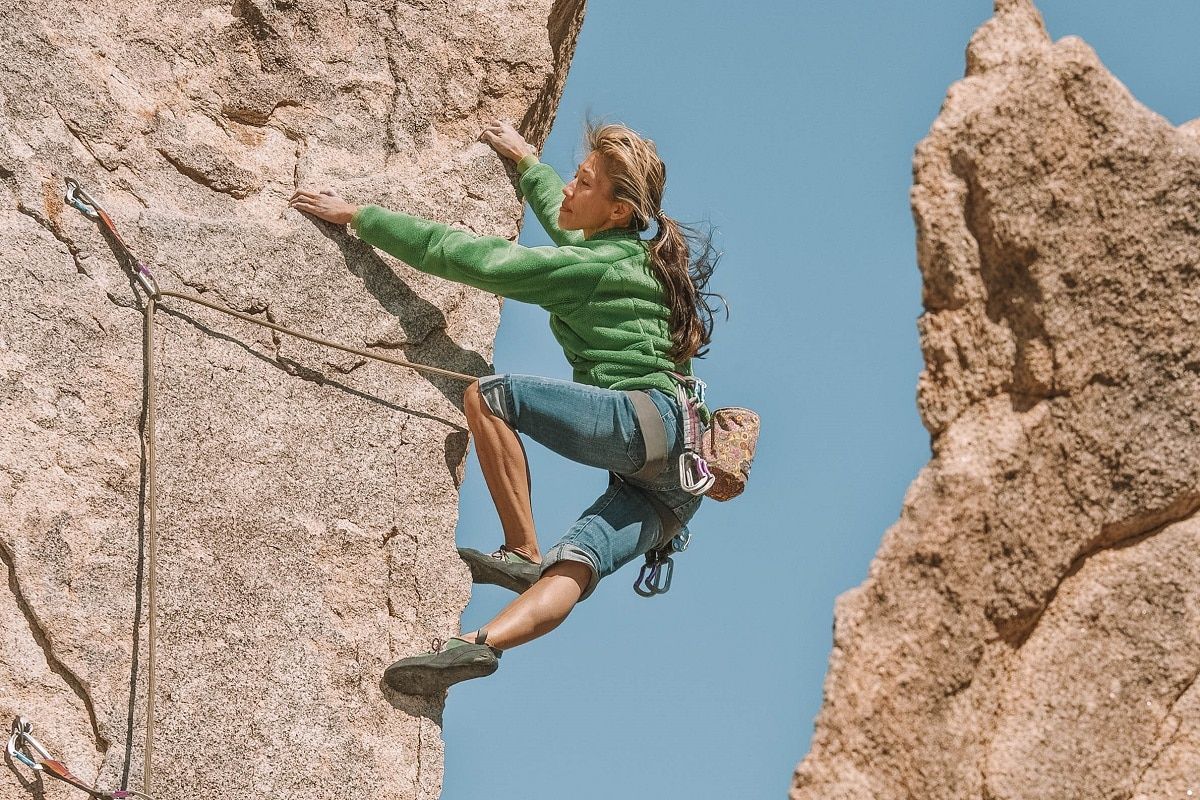
If you’re visiting the park between October-April and you’re interested in rock climbing, you’ve come to the right place.
Whether you already enjoy rock climbing or you’ve never done it before, Joshua Tree is a great place to gain experience.
Named for the unique desert plant, the Joshua Tree, this park is also home to fields and fields of giant, car-sized rock formations.
It’s no surprise then that it’s so popular among traditional rock climbers and boulderers alike.
Climbing is one of the best things to do in Joshua Tree in December and the colder months as a whole because the rocks aren’t unbearably hot during the winter.
To climb safely, you’ll want to buy a book on the various routes in Joshua Tree or sign up for a guided tour. However, here are some starter locations for premium places to climb or boulder:
- Quail Springs Rock
- Thin Wall
- Hound Rocks
- Atlantis Wall
- White Cliffs of Dover
- Intersection Rock
- Jumbo Rocks Campground
- Indian Cove Campground
Check out this guide to good rock climbing practices from the park website. You can also hire one of the local guides below to “show you the ropes” (ba-dum ssh) on a day tour.
If ropes and helmets aren’t your thing, it’s still very entertaining to watch others climb!
Head over to one of the places mentioned above and look for people on the rocks. Most climbers don’t mind if you watch from a distance.
Ryan Ranch Ruins
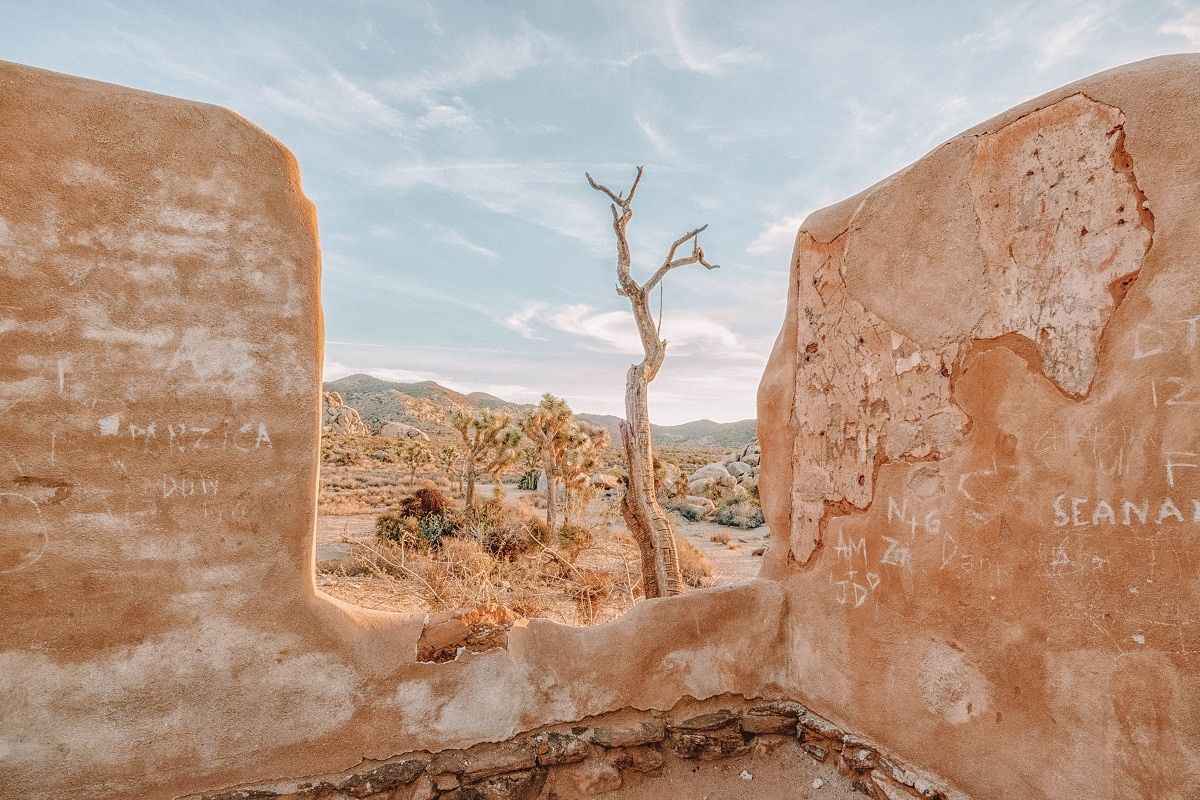
The Ryan Ranch Ruins are all that remains of the homestead of J.D. Ryan, who built his ranch in the late 1800s.
The original home was made of adobe and consisted of the main house and two bunkhouses, plus a corral and a well. The buildings were in decent shape until the 70s when they burned.
Since then, park archeologists have stabilized the remaining walls and what’s left is still an interesting sight to see.
To get to the ruins, you can start in Ryan Campground or the trailhead just outside the campground. The trail is 0.8 or 1.2 miles round trip, respectively, with very little elevation gain.
Biking
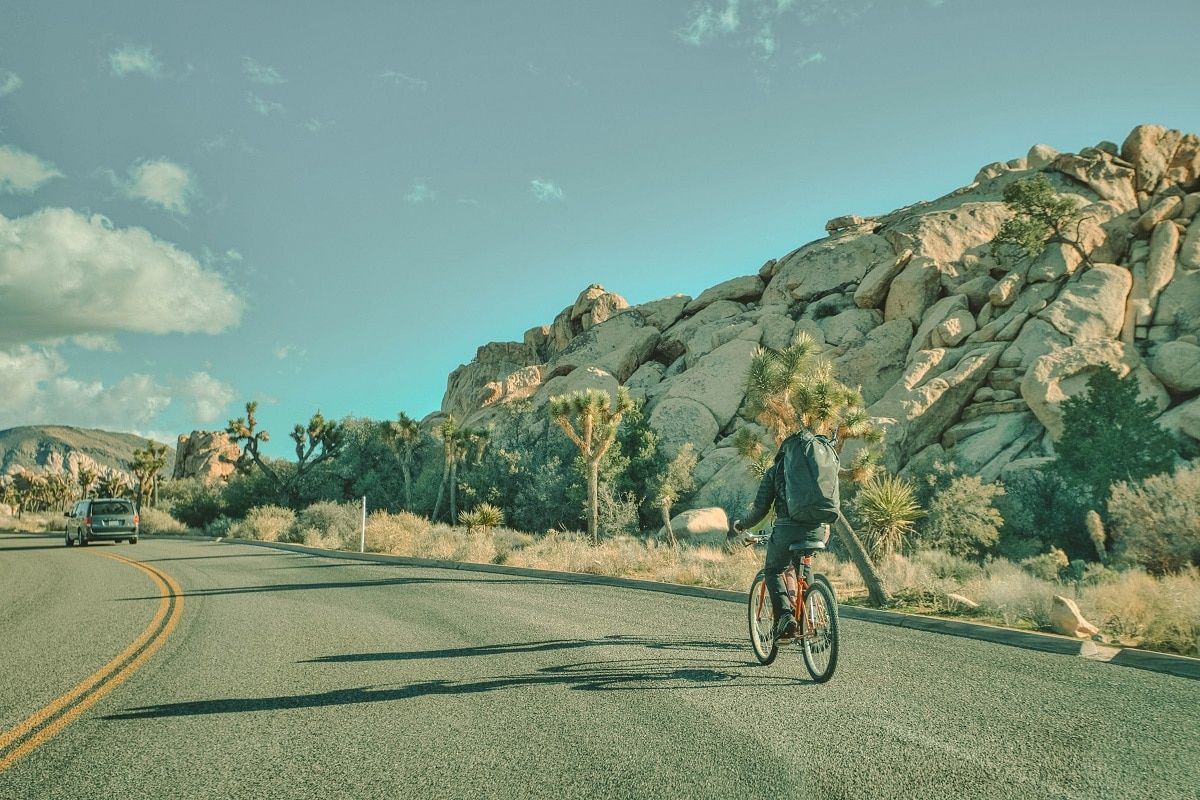
If you’re interested in exploring the park at a slower, more intimate pace I suggest you bring your bike.
Bikes are allowed on any of the roads (paved or unpaved) and the park recommends bikers check out the backcountry roads since those have less traffic.
Of course, you can also explore these roads with a 4WD vehicle. Some popular routes include:
- Berdoo Canyon Road
- Black Eagle Mine Road
- Covington Flat
- Queen Valley Roads
- Pinkham Canyon-Thermal Canyon Roads
Please stay on the road, whether you’re biking or driving since the desert soil is incredibly fragile. The tire tracks of off-road visitors can be seen for decades after they pass through!
Birdwatching
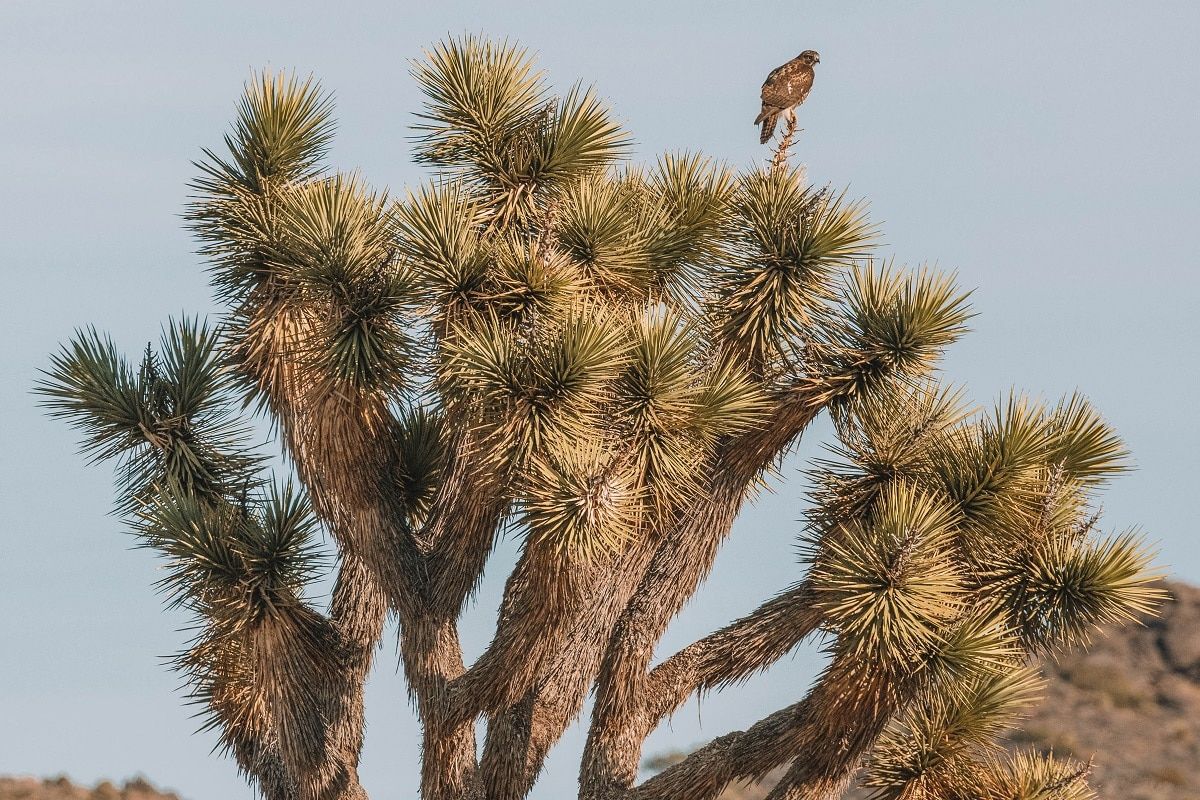
I have spent many years working with people who were into birding but I never really got into it myself until I downloaded the Merlin Bird ID App. The app makes identifying the little buggers so much easier and more fun.
When birding in Joshua Tree, look for places where water naturally occurs (i.e. springs). Even in drier conditions, the vegetation in dry stream beds attracts birds.
Some good places to look for birds in Joshua Tree include Barker Dam, the Oasis of Mara, Cottonwood Spring Oasis, and 49 Palms Oasis.
Geology Tour Road
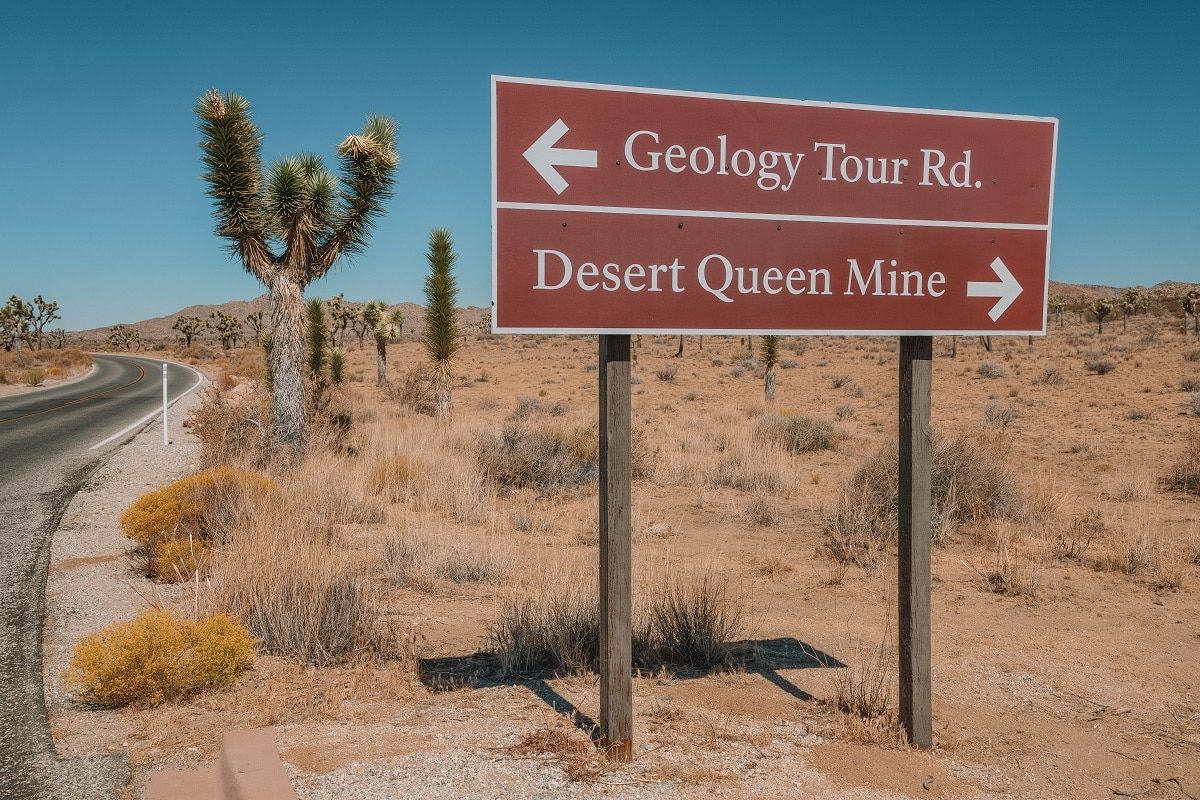
If you’re already driving through the park and looking for things to do in Joshua Tree besides hiking, you should check out the Geology Tour Road.
This is an 18-mile self-guided tour that takes you through beautiful desert landscapes with lots of signage to explain the sights. The road takes most people about two hours round trip.
While the beginning of the road can be accessed by most vehicles, to do the whole thing you’ll need 4WD (like any proper adventure!).
If you don’t have 4WD or don’t feel comfortable driving on dirt roads, you can take part in a guided driving tour.
Wildflowers
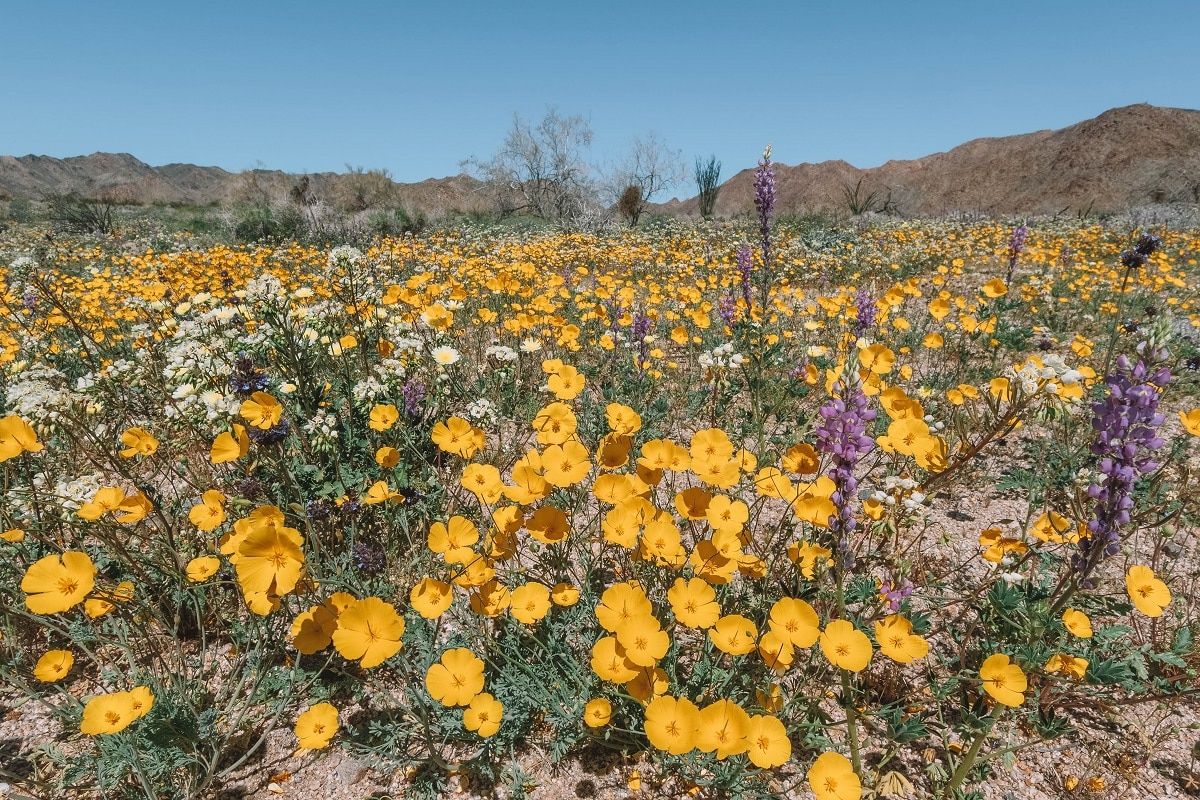
Delicate and ephemeral desert wildflowers are a spectacle to behold if you visit in the right season.
The wildflower bloom in Joshua Tree starts in February and ends in June in most years.
Depending on the exact time of year you visit, there are lots of great trails to see wildflowers, some of which include:
- Ryan Mountain
- Arch Rock
- Barker Dam
- Hidden Valley
- Lost Palms Oasis
Joshua Trees
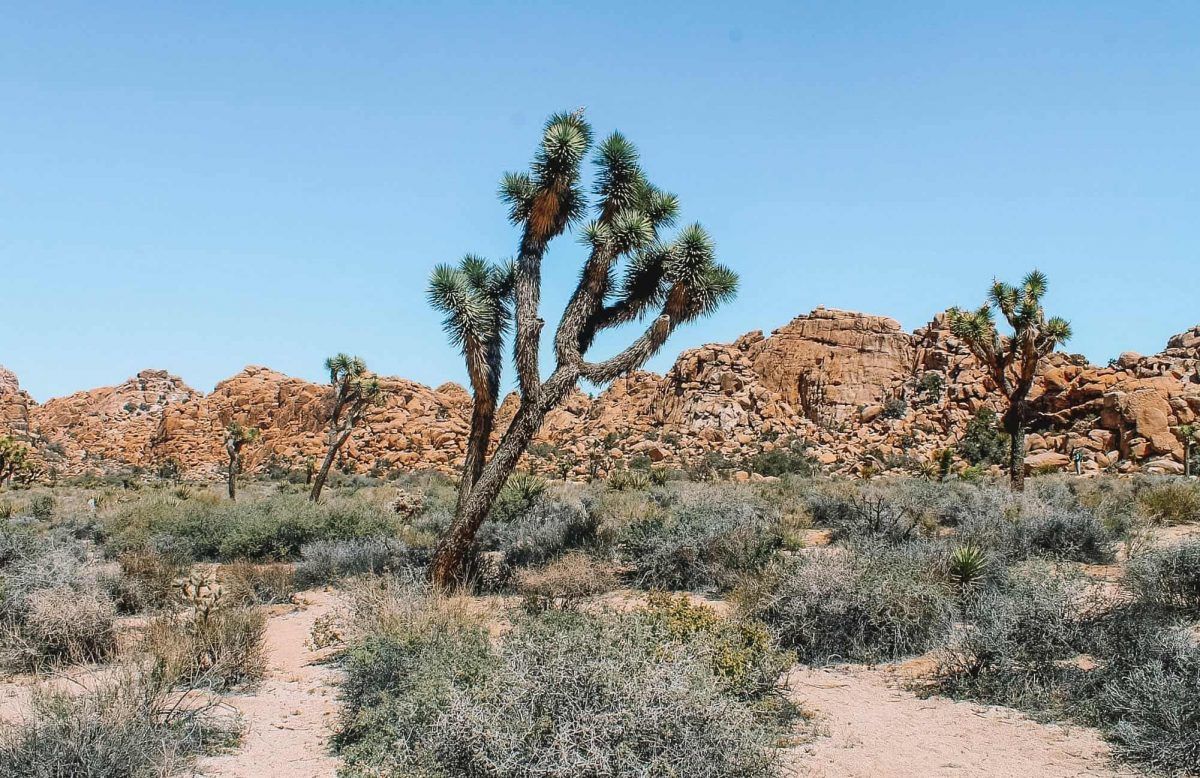
The park is named after these wacky plants, so why not take a minute to intentionally enjoy them? Make a game of finding the most whimsical, goofy-looking tree.
Joshua Trees live in the Mojave Desert portion of the park (think northwest corner). You’ll see them if you enter from the West Entrance station via Yucca Valley.
Just remember to admire your new friend from a distance. Joshua Trees are delicate and it’s a fineable offense to climb on the Joshua Trees or hang anything on them (like prayer flags or lights).
U2’s Joshua Tree Album
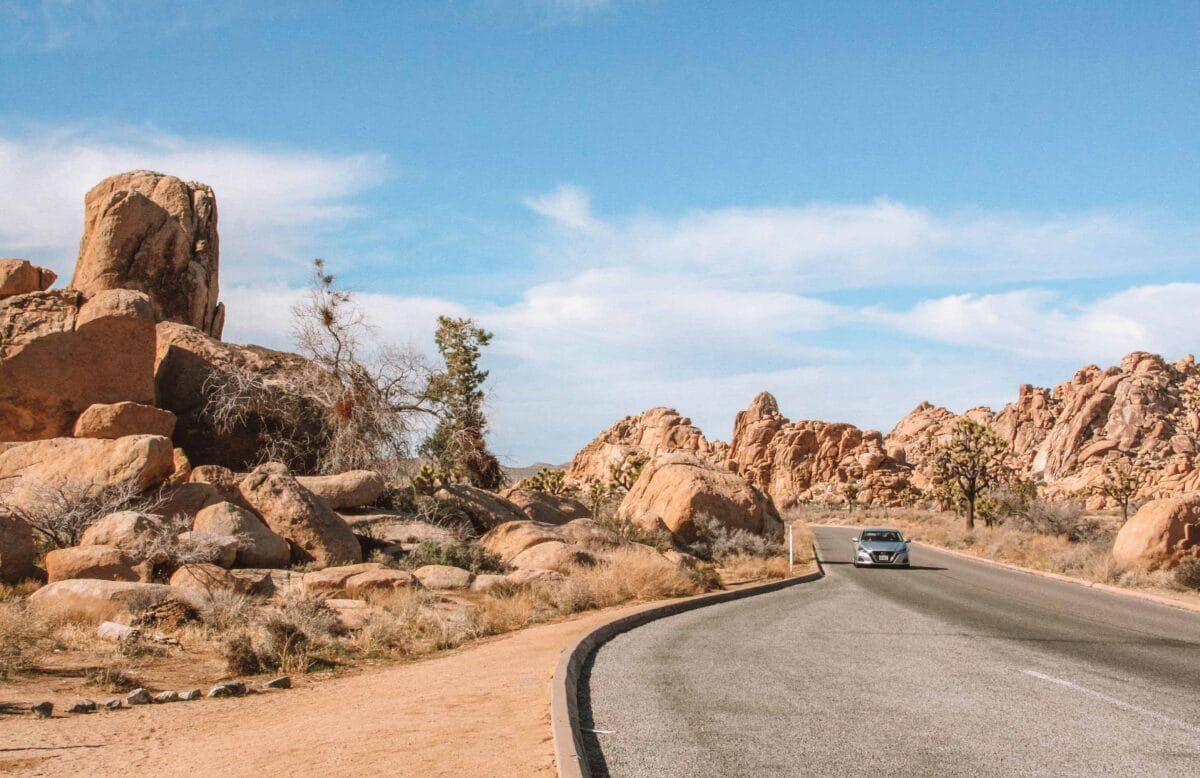
I like when my playlist follows a theme, so what better soundtrack for the long open roads of Joshua Tree than U2’s The Joshua Tree?
There’s nothing more perfect than listening to this album while actually in Joshua Tree.
Make sure to download the album to your phone ahead of time and crank it up while driving through the lone desert landscape.
Nature Photography
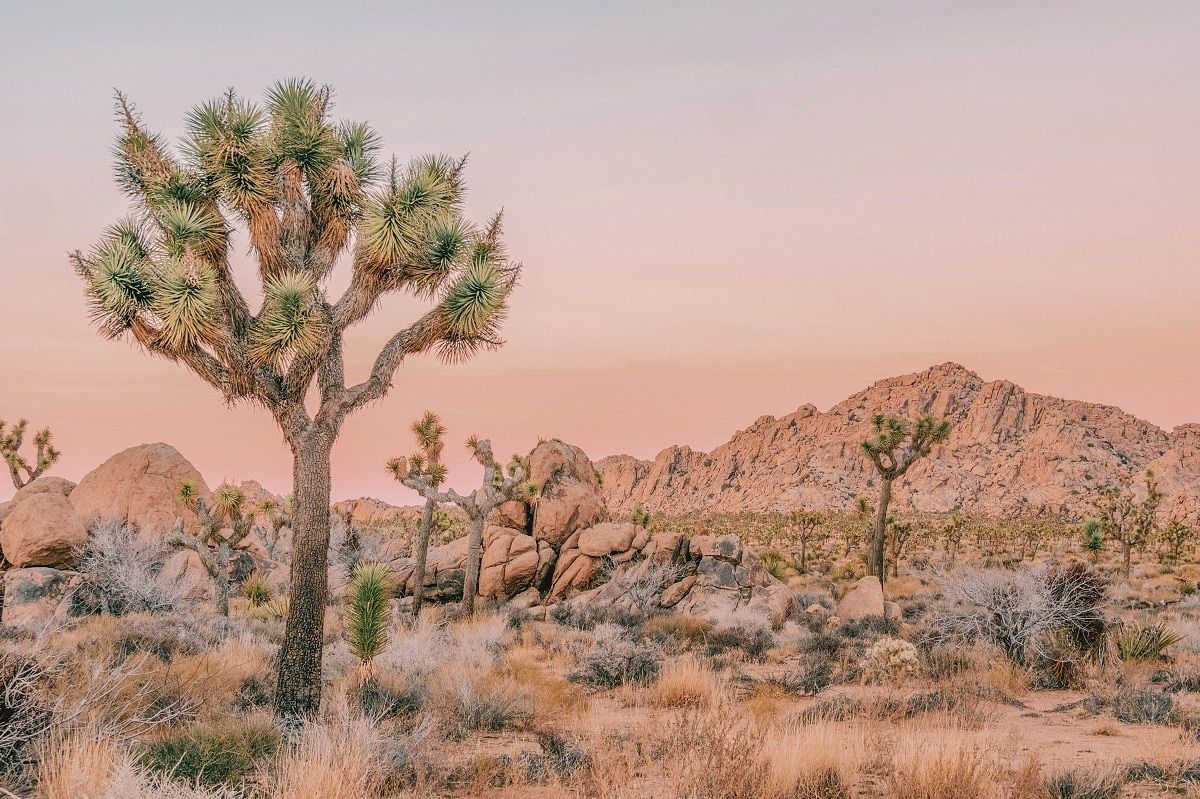
Stark, haunting, ethereal, or mysterious might be some of the words used to describe the unusual, whimsical, and austere landscape in Joshua Tree National Park.
This “unusual vibe” is exactly what makes it such an enticing place to practice your nature photography.
Catching golden hour (the time right around sunrise and sunset) is the best time to capture the desert aesthetic.
Sunrise and Sunset at the Park
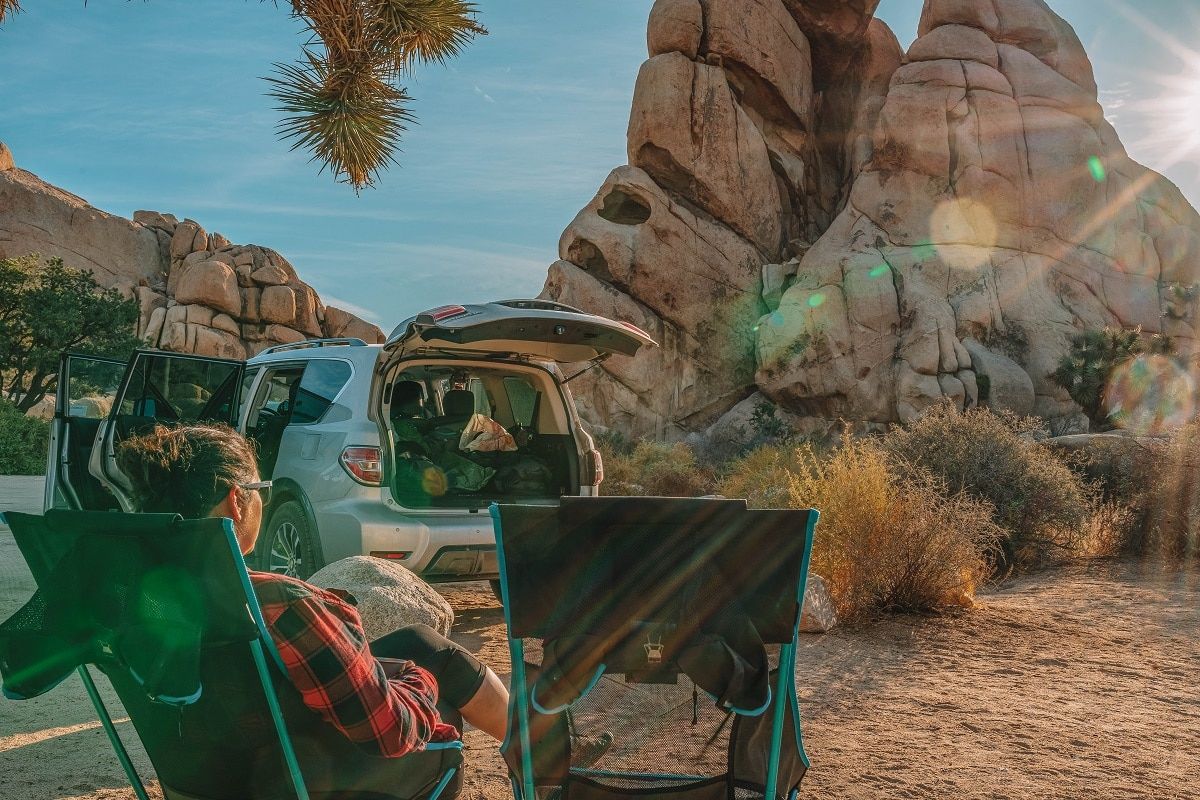
You don’t have to hike or participate in extreme sports to enjoy the beauty of the desert. Simply showing up at the right time in the right place can be rewarding enough.
Not only are sunrises and sunsets beautiful in Joshua Tree, but they’re also great times to enjoy the park because the temperature is cooler and the park is less busy.
These are some of the top spots to catch the sunset and sunrise in Joshua Tree: Cholla Cactus Garden, Keys View, and Hidden Valley Campground.
Stargazing

Did you know that wildlife and even plants are affected by city lights?
Trees that grow in cities bloom earlier than trees in forests because the constant light tricks them into thinking it’s spring sooner! Human health can also be impacted by nighttime lighting.
In recognition of the fact that night skies are essential to healthy ecosystems and people, there is an International Dark Sky designation that is awarded to parks that meet certain dark sky criteria. And Joshua Tree is one of those parks!
If you’re looking for things to do in Joshua Tree at night, you can download a constellation finder like SkiSafari before you head into the park. Then, layout and enjoy your human heritage: a dark sky filled with stars.
Annual Night Sky Festival
To celebrate the excellent night sky in Joshua Tree, there’s a Night Sky Festival in September every year.
The event is held at the Sky’s the Limit Nature Center and Observatory, which is just outside the north entrance to the park. You’ll need a ticket for the event–they go on sale in early summer.
Camping
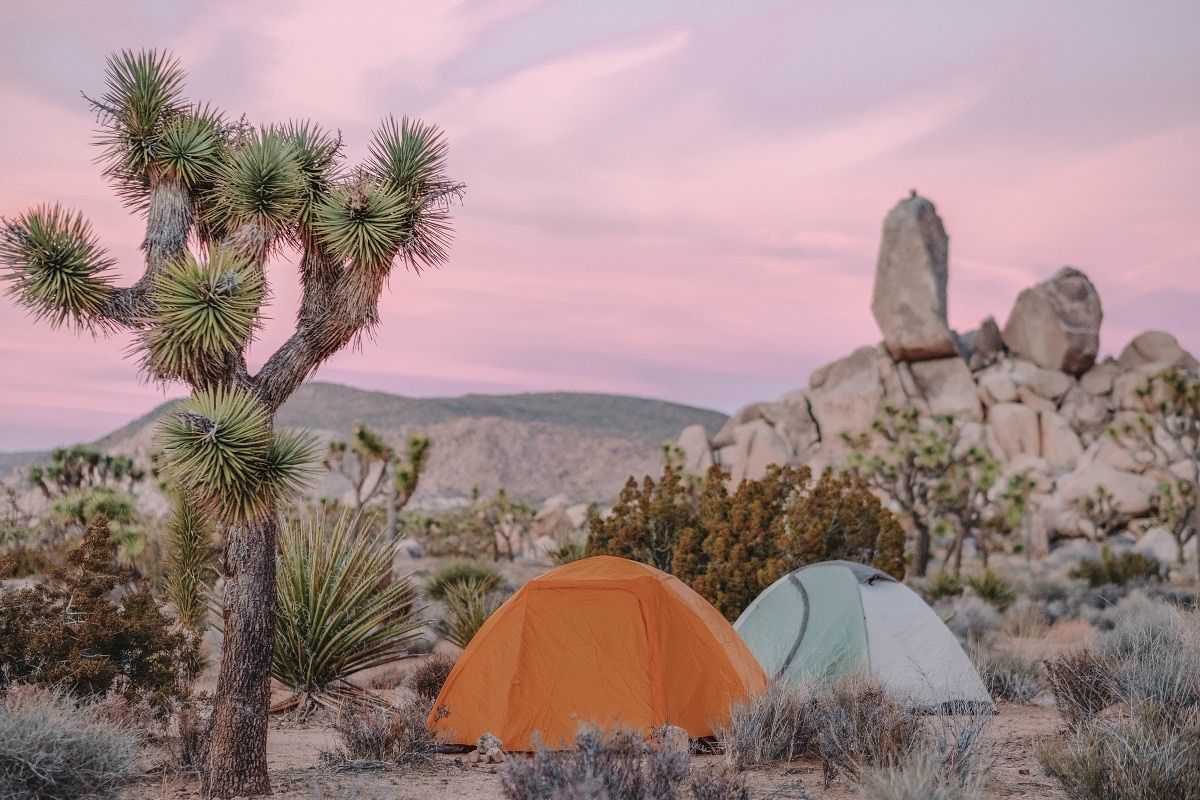
If you want to immerse yourself in the natural beauty of Joshua Tree National Park, one great way is to camp in the park.
Camping in the park gets you closer to the unique vegetation and wildlife than a hotel room, plus it gives you a chance to unplug.
Joshua Tree National Park has about 500 campsites, which may seem like a lot, but they get booked up fast! Check out the park website for the most updated camping information.
I have only stayed in one campground in the park, Jumbo Rocks, and it was neat! There are giant boulders everywhere and several short hikes from the campground.
There are lots of great campgrounds in the park, so the best one for you depends on what you’re looking for.
For example, many of the campgrounds are quite primitive and only have pit toilets, but if water access is important to you, you should check out Black Rock or Cottonwood Campground.
Below, I’ve chosen the best (IMO) campgrounds in Joshua Tree National Park for a variety of camping styles.
Cottonwood Campground
The Cottonwood Campground is one of the few campgrounds with running water and a dump station for RVs. It has 62 sites that are reservable ahead of time online on recreation.gov.
I mentioned this campground earlier because it’s near Cottonwood Spring, which is an easy hike to a rare green spot in the park. This campground is located off Pinto Basin Road, near the southern entrance to the park.
Jumbo Rocks Campground
The Jumbo Rocks Campground is the biggest in the park and is located on the eastern end of Park Boulevard, the main east-west thoroughfare through the park.
This campground is surrounded by beautiful cream-colored boulders and is near the famous Skull Rock.
You’ll also see climbers scrambling up the sides of some of the rock climbing routes in the campground, which is kind of like free entertainment.
This park doesn’t have water available, but it does have pit toilets and picnic tables.
Hidden Valley Campground
The Hidden Valley Campground is a first-come, first-served campground with 44 sites. It’s $15/night and has pit toilets.
The campground is full of Joshua Trees, which make dramatic silhouettes against the setting sun.
The campground is located right off Park Boulevard and is also near lots of popular attractions like Keys Ranch, Barker Dam, and the Wall Street Mill.
Note: this is where our editor, Mimi, stayed last time she was in Joshua Tree. She loved it for its beautiful sunrises and sunsets and low-key, quiet nature. She just recommends bundling up because it gets cold at night!
White Tank Campground
Ok, I said I’d pick a wide range of campgrounds, so White Tank made my list because it’s the smallest campground and kind of in the middle of nowhere. But hey! Some people love that.
This campground is located off Pinto Basin Road and only has 15 sites. One perk is that it offers especially dark night skies.
The sites are first-come, first-served and are $15/night. There’s no water at this campground, but there are pit toilets.
Best Things to do Near Joshua Tree National Park
Joshua Tree Rock Shop
It just isn’t a desert adventure without a trip to the local rock shop. You can’t take anything out of the national park, so if you’re looking for a geological souvenir, you’ll need to head into town.
Get your fix of crystals, gems, minerals, and fossils at the Joshua Tree Rock Shop located in Joshua Tree, CA.
Pioneer Town
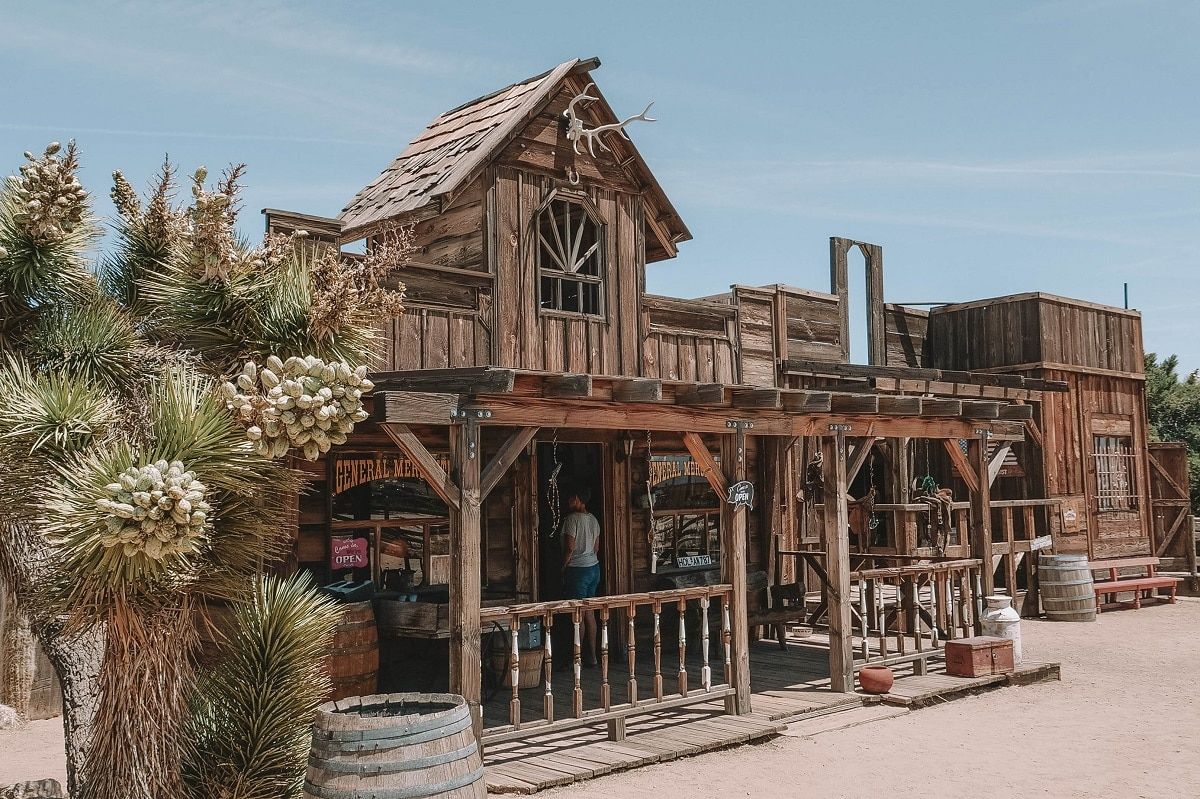
As you explore Joshua Tree and the surrounding areas, you’ll probably get strong “Old West Vibes,” and there’s a good reason for that!
Joshua Tree and its surrounding areas were the locations for old western movies back in the 50s, and you can walk around an old movie set in Pioneer Town.
While this spot is no longer used for filming, there are a few restaurants around Pioneer Town now (ahem, Pappy & Harriet’s) and it makes a great day trip from Joshua Tree.
The World Famous Crochet Museum
The World Famous Crochet Museum was started by local artist, Shari Elf.
The tiny, kiosk-sized museum sits among other “found art” installations curated by Elf in a gallery called Art Queen.
This is one of the weird Joshua Tree attractions you shouldn’t miss, even if it only takes a few minutes to peruse the collection.
The World Famous Crochet Museum is located in the town of Joshua Tree. The website boasts that patrons 18 and over are free to enter and those under 18 are also free.
The Noah Purifoy Desert Art Museum
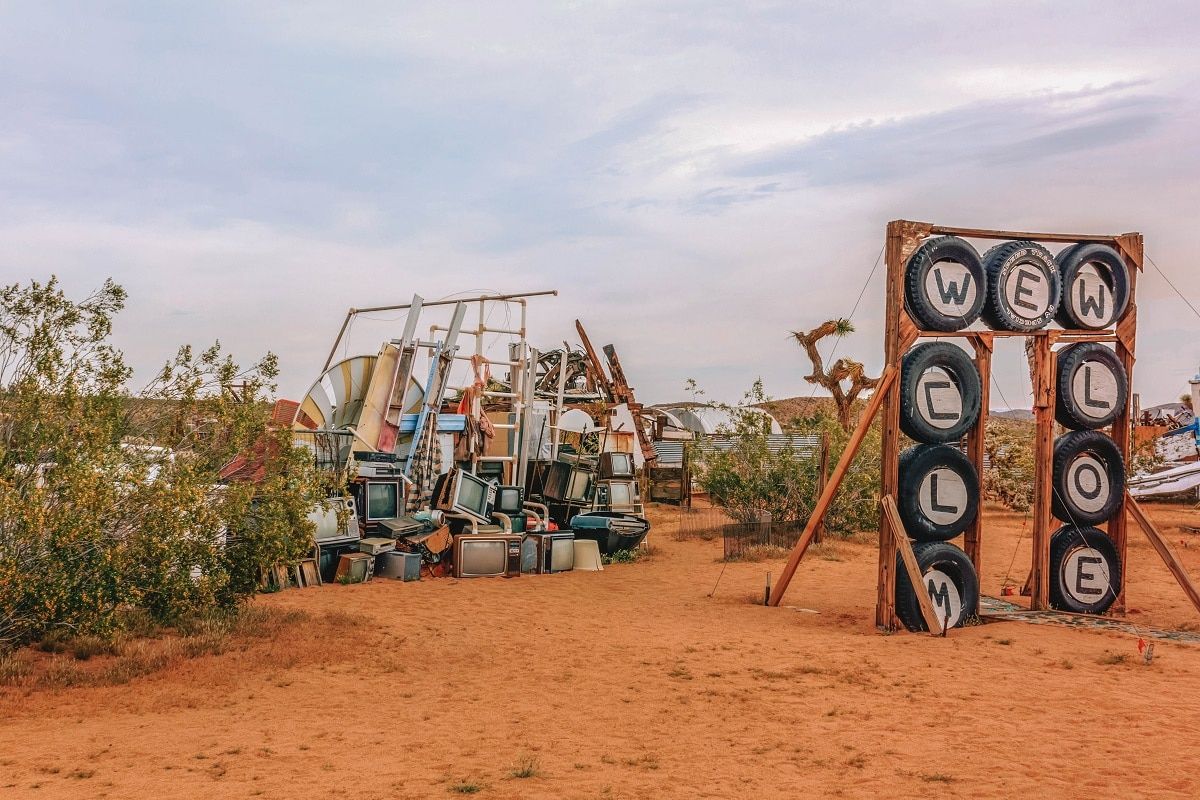
The Noah Purifoy Desert Art Museum is one or two notches up on the serious art scale. This outdoor art collection is still free to the public and is open every day from sun up until sundown.
The museum is dedicated to the work of Noah Purifoy, an Alabama transplant to Southern California in the ’70s. His sculpture art is mainly created from found objects and other people’s “junk.”
Purifoy passed in 2004 but was an interesting man who worked to establish art programs in prisons. If nothing else, learning about this local artist would make a nice day trip.
Beauty Bubble Salon and Museum
The Beauty Bubble Salon and Museum is both a functional salon and museum featuring thousands of hair and beauty artifacts collected by owner Jeff Hafler.
Hafler is recorded in the Library of Congress as “America’s Hairstorian,” and in addition to his museum, he’s a stylist specializing in all the modern haircutting/coloring techniques.
The museum collection has received worldwide recognition (at least according to the website). It’s open to the public Thursday-Sunday.
You can also book appointments with one of the stylists at the salon Monday-Wednesday.
The Glass Outhouse Art Gallery
The Glass Outhouse Art Gallery in Twentynine Palms is an art gallery with work from all over the country.
This outdoor gallery is free to experience, although they appreciate donations. The owner Laurel Siedl is lovely and it’s her renovated rabbit barn that acts as the main building on the property.
On the first Saturday of the month (excluding July and August), the Glass Outhouse hosts a Grand Opening with great pomp and circumstance. This gala-esque event has live music and dancing.
The Love Signs
The Love Signs are kind of an extension of the quirky art installations scattered throughout Twentynine Palms, Joshua Tree, and Yucca Valley. The Love Signs are three small billboards with the word “love” in six different languages.
The signs are located on Highway 62, nine miles east of Twentynine Palms, and are near the Glass Outhouse Art Gallery.
Hi-Desert Nature Museum
The Hi-Desert Nature Museum is a combination natural history museum, mini-zoo, and art gallery.
In 2022, they’re featuring an exhibit called “Reduce, Reuse, Recycle,” which touches on the growing trend of artists to create “found art” pieces.
Their mini-zoo features animals that were injured and could not be released back into the wild, including native snakes, lizards, and spiders.
Famously, they also have a cockatiel that was abandoned near the parking lot and a few different cockroach species that are, quote, “adored by staff.”
Integratron Sound Bath
If you’re looking to relax on your vacation in a unique environment, you need to check out the Integratron Sound Bath. The Integratron, according to its website, is a “fusion of art, science, and magic.”
A sound bath is essentially music relaxation therapy. In this instance, the music comes from quartz crystal “singing bowls” that are played live and are tuned to align with chakras (energy sources) in your body.
The result is supposed to be an incredibly relaxing experience that leaves you feeling refreshed and focused.
This white, dome-shaped building is located 20 miles north of Joshua Tree. Its construction was inspired by the “design of Moses’ Tabernacle, the writings of Nikola Tesla, and telepathic directions from extraterrestrials.”
If you’re not put off by any of the above phrases, then I encourage you to visit! The Integratron is currently owned by three sisters who operate the bath services and the building is listed on the National Register of Historic Places.
Fair warning though, the sound bath sessions are expensive and sell out very quickly.
Smith’s Ranch Drive-In Movie Theater
We had a drive-in movie theater in my hometown and it was such a pleasant part of my growing up. I’m not sure why they’re so rare now considering the costs to operate them are so low.
Especially since 2020, the idea of sitting to watch a movie outdoors on your tailgate sounds amazing. Plus, you get to bring your snacks from home and they’re cheap to attend!
Whether you’re interested in reliving a childhood experience or trying something new, stop into the Smith’s Ranch Drive-In Movie Theater to watch a movie with your family. Tickets are $5/person (cash only) and they offer new movies every Friday.
The theater is located just a few minutes from Joshua Tree National Park in the town of Twentynine Palms, CA (near the west entrance to the park).
Antique Shopping
I love antiquing. Love it. It’s one of the things I missed the most during the height of the pandemic.
I think it’s a combination of “reducing, reusing, and recycling,” plus the challenge of finding something cool that draws me in.
Regardless, next time you’re in Joshua Tree National Park, you should make it your mission to visit these antique stores.
Experience has shown me that the weirder the town, the better the antique stores.
Pioneer Crossings Antiques
Pioneer Crossings Antiques is an antique mall where individual dealers set up permanent stalls.
There are 22 dealers associated with Pioneer Crossings, some of whom specialize in American art pottery, local art, home furnishings, cabin decor, and books. They also feature Howard Pierce Pottery.
Pioneer Crossings is located in Yucca Valley and is close to the Pioneertown movie set.
The End
The End vintage shop in Yucca Valley describes itself as a “vintage oasis in the Mojave Desert.” It features an eclectic mix of clothing and jewelry and even has an online store now.
Ricochet’s Vintage Wears
Ricochet’s Vintage Wears has a collection that “ranges cosmic threads to punk rock apache garb.” It’s a great place to find a Halloween costume and is located in the town of Joshua Tree.
JT Falconry Adventures
JT Falconry Adventures offers “raptor conservation through education,” via three different guided walks.
Many of these educational sessions can be booked year-round and much of the proceeds go toward supporting falcon conservation.
All of the tours involve getting to see real birds of prey. The first two tiers of the tour involve either a stationary lecture or a guided walk, respectively. In their most advanced tour, you’ll get the chance to hold a falcon (with a glove).
Horseback Riding at Knob Hill Ranch
Knob Hill Ranch is your go-to place for horseback riding.
Knob Hill is a private ranch vacation venue with a guest house and features horseback riding into Joshua Tree National Park. It’s located in Yucca Valley, right outside the park.
The facility is very close to local equestrian trails, including the 35-mile California Riding and Hiking Trail that goes into the park.
Knob Hill Ranch offers several different horseback riding packages, including options for beginners and half-day and full-day options.
The facility also offers wifi, has a licensed massage therapist on staff, and is pet-friendly.
The Sky’s the Limit Observatory and Nature Center
Ok–I’ll say it upfront: The Sky’s the Limit Observatory and Nature Center is currently not offering programs (since 2020), but I’m including it in this post since things could change in 2022 and I want you to have it on your radar!
You can still walk around the campus here and enjoy the meditation garden, but the dome building isn’t open.
When it *was* open, people loved it though. And as a former planetarium operator myself, I always have to encourage people to check out the night sky.
Get a Massage
One of my favorite things to do after a long day of hiking is to unwind with a hot bath and a massage.
I love my foam roller, but there’s something different about having someone else work on your knots.
Check out some of these talented local massage therapists just a few minutes outside the park.
Day Trip to Palm Springs
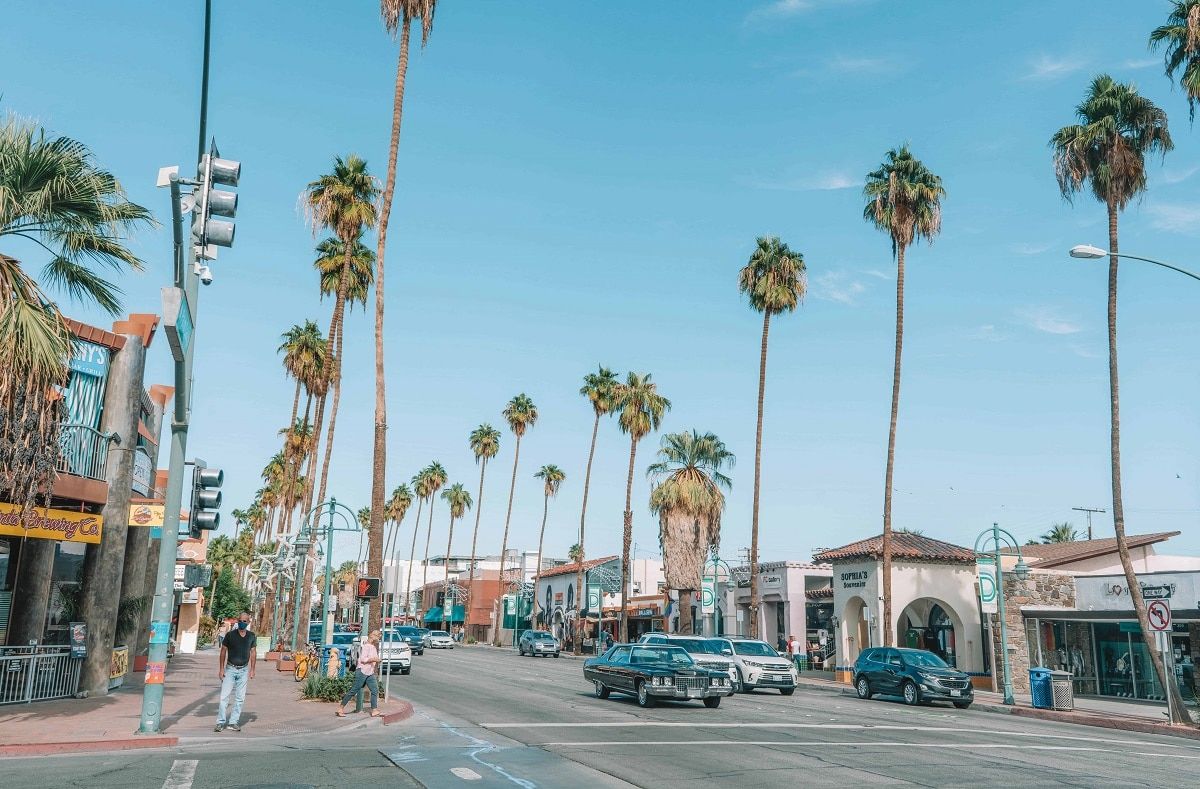
The town of Palm Springs is just under an hour from the west entrance to Joshua Tree.
This is the biggest, closest town to the park and offers full-scale amenities like grocery stores, and hospitals (should you need one), amazing art and culture, a zoo, and excellent dining options.
There’s a lot to do in Palm Springs, so to make it easier, you can check out our guide to the best things to do in Palm Springs.
We also have a road trip guide for Palm Springs to Joshua Tree (that’s easy to do in reverse).
Explore the Local Food & Drink Scene
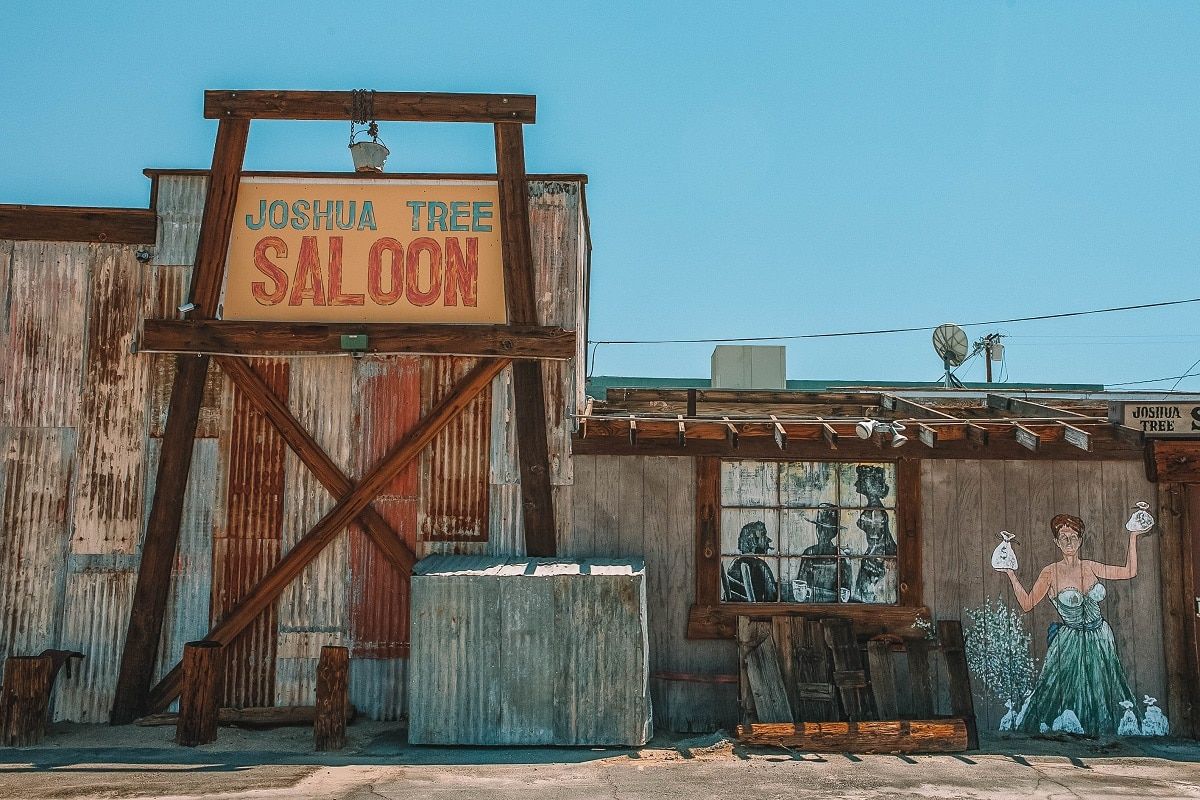
The area surrounding Joshua Tree National Park has some pretty fun places to eat, accommodating a wide range of tastes and dietary preferences.
Here are some of my favorites, organized by meal.
Breakfast/Coffee:
Joshua Tree Coffee Company: Located in Twentynine Palms, this is the most popular coffee place in the area. They roast all their beans in-house and specialize in small-batch coffee.
Natural Sisters Cafe: Natural Sisters offers organic, vegan, and vegetarian options (plus options for meat-eaters), and a selection of fresh juices and coffee.
Lunch/Dinner:
Crossroads Cafe: This cafe, in the town of Joshua Tree, is famous for diner-style eats. Here you’ll find staples like burgers and fries (but also portobello burgers).
Joshua Tree Saloon: If you’re looking for an Old West-themed eatery, or you love fish tacos, check out the Joshua Tree Saloon located in Joshua Tree, CA.
Glamping
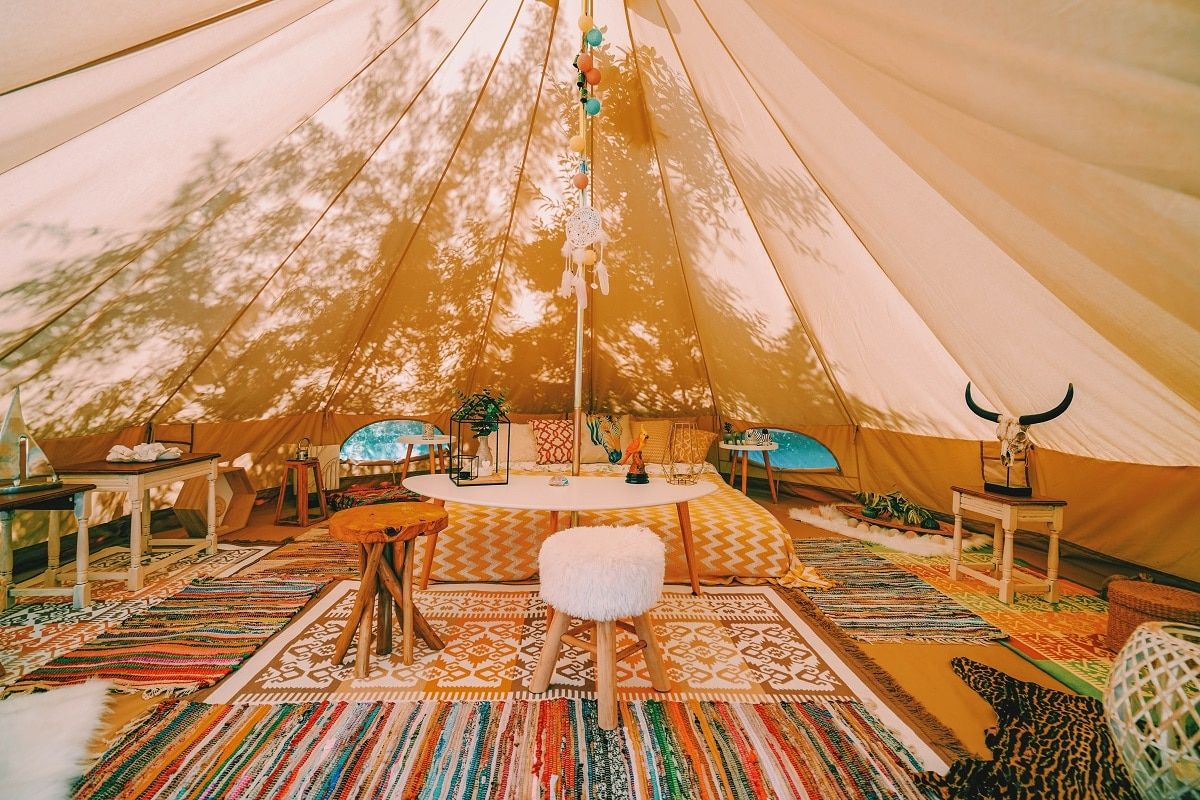
Glamping is a mish-mash of the words “glamor and camping,” and the concept is having a moment.
Glamping spots are often outfitted with semi-permanent, heavy-duty canvas tents and furnished with cushy beds, soft linens, carpets, and sometimes even electrical outlets.
There are a ton of exquisite glamping locations around Joshua Tree. Three of our favorites are Desert Rose Collective, Wonder Valley Yurts, and Joshua Tree Tents.
If you’re looking for more options though, we wrote a whole post on our favorite glamping spots in Joshua Tree and one on the best glamping spots in California overall.
Otherwise, if you’re more into hotels, we have a complete guide to the best hotels near Joshua Tree.
ABOUT THE AUTHOR

Meredith Dennis
Meredith is a biologist and writer based in California’s Sierra Nevada. She has lived in 6 states as a biologist, so her intel on hiking and camping is *chef’s kiss* next level. One of her earliest camping memories was being too scared to find a bathroom at night on a family camping trip. Thankfully, she’s come a long way since then and she can help you get there too!
Looking for more national and state park travel inspiration? Read our related articles below!
Things to do in Death Valley National Park
Epic California National Parks Road Trip
The Complete Guide to National Parks in California
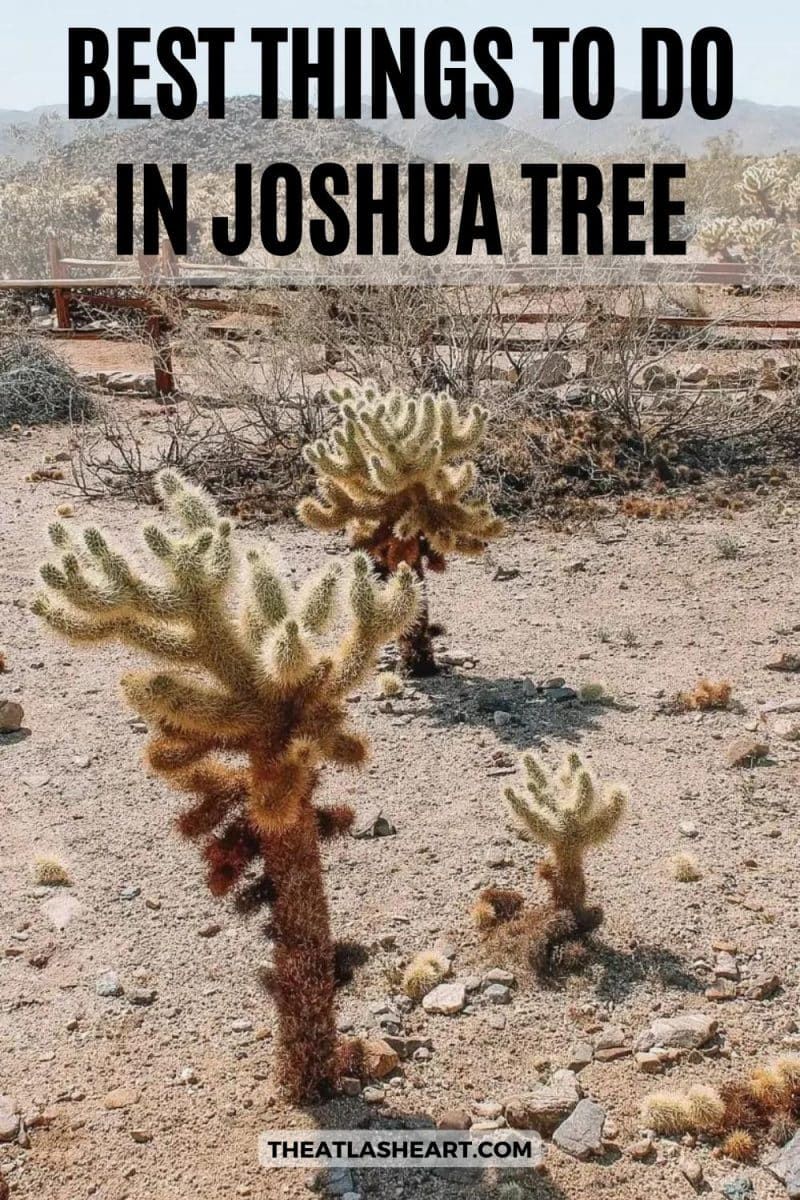
Pin this image for future reference

